- Contributors

Corporate Governance Case Study: Tesla, Twitter, and the Good Weed
Justin Slane, Sharon Makower and Joe Green are editors for the Capital Markets & Corporate Governance Service at Thomson Reuters Practical Law. This post is based on a Practical Law article by Mr. Slane, Ms. Makower and Mr. Green.
Perhaps no company in the world has the perception of its brand being tied to one person more than Tesla Inc. (Tesla) and its CEO and now former chairman of the board, Elon Musk. As at least one journalist phrased it, “ Elon Musk is Tesla. Tesla is Elon Musk .” And Musk is not just the face of Tesla, but a co-founder of PayPal and Solar City, the founder and current CEO of SpaceX and founder of its subsidiary, The Boring Company. He has crafted a “real-life Iron Man” persona, including all the eccentricity, and is undoubtedly one of the most recognizable and polarizing CEOs in the world.
But 2018 has not been the best year for Elon Musk. In what Musk would call negative propaganda pushed by short sellers, Tesla has faced heightened scrutiny and increasingly negative media attention related to a litany of issues, including cash burn , vehicle safety , production capabilities , and a string of employment-related lawsuits and executive exits ( only made worse recently ). Analysts and investors began to publicly cool on Tesla and question its long-term value, which Musk also attributed to short sellers .
In May, citing independence concerns and questioning whether Musk may be stretched too thin, proxy advisory giants Glass, Lewis & Company (Glass Lewis) and Institutional Shareholder Services, Inc. (ISS) opposed the re-election of current Tesla board members and supported splitting Musk’s roles as CEO and chairman.
As the pressure mounted, Musk became increasingly combative, especially on Twitter, lashing out at short sellers and anyone criticizing Tesla or him. Musk’s erratic behavior and obsession with short sellers and critics drew more criticism of his leadership and that of Tesla’s board of directors .
But it all came to a head on August 7, when in the middle of the trading day, without notice or warning to anyone (including other executives and directors at Tesla or contacts at Nasdaq, the exchange on which Tesla’s common stock is listed), Musk tweeted:

Then, for reasons still unknown, nobody took his phone away, and Musk continued tweeting and interacting with shareholders throughout the day:

The public reaction to Musk’s tweets was strong and immediate. Tesla’s stock soared before Nasdaq eventually halted trading for several hours later in the day, and there was instant speculation about whether Musk actually had the funding to take Tesla private (spoiler: he did not).
Musk’s drastic departure from normal public disclosure standards and the subsequent media circus arising from it unsurprisingly captured the attention of the Securities and Exchange Commission (SEC), which ultimately resulted in an enforcement action and settlement with Elon Musk over the tweets. Tesla also settled with the SEC. The end results of the settlements include the following:
- Musk must step down as chairman of the board and be replaced by an independent chairman, but Musk will be allowed to remain as CEO. On November 7, 2018, Tesla appointed an independent chairman.
- Musk and Tesla must each pay $20 million in fines.
- Tesla must add two independent directors and create a formal disclosure committee to oversee communications from Musk.
- Tesla must hire an experienced securities lawyer, subject to approval by the SEC Division of Enforcement (Tesla’s current general counsel was Elon Musk’s divorce attorney and worked primarily in family law before joining Tesla).
This post examines this corporate governance cautionary tale, focusing primarily on the Regulation FD (Reg FD) issues raised by Musk’s tweets and public statements. The full article from which this post is excerpted also examines a host of other issues including disclosure controls and procedures, stock exchange requirements, conflicts of interest, board independence, and more, highlighting for each issue where things went wrong and identifying resources that perhaps could have helped avoid this type of mess. To learn more about these issues, the full article can be accessed here .
Complying with Regulation FD
Much of the initial reporting surrounding Musk’s tweets questioned whether the use of his personal Twitter account violated Reg FD. Reg FD, which took effect in 2000, prohibits selective disclosure by requiring that material nonpublic information disclosed to securityholders or market professionals (including research analysts) must also be disclosed to the public in a broad, non-exclusionary manner. And in fact, in finally answering why he tweeted about taking Tesla private, Musk explained in an August 13 blog post that he wanted to have discussions with key shareholders and he felt it “wouldn’t be right to share information about going private with just [Tesla’s] largest investors.” While Musk’s intentions are noble and in line with the basic principle of nearly 20-year-old federal securities law, the reports were correct that Reg FD generally requires more than tweets.
SEC guidance issued in 2008 and 2013 regarding the use of company websites and social media for disclosure suggests that companies can still satisfy Reg FD requirements if they notify investors of where they can expect material information to be disclosed online, making it a “recognized channel of distribution.” In particular, the 2013 guidance dealt with the Netflix CEO disclosing monthly viewing hours on his personal Facebook page.
The SEC stated that disclosing material nonpublic information on the personal social media site of an individual corporate officer, without advance notice to investors that the site may be used for this purpose, is unlikely to satisfy Regulation FD because it is not likely a method “reasonably designed to provide broad, non-exclusionary distribution of the information to the public” that Reg FD requires. The SEC stated this is true even if “the individual in question has a large number of subscribers, friends or other social media contacts, so that the information is likely to reach a broader audience over time.”
The SEC used its 2013 guidance to highlight the concept that whether a Regulation FD violation occurred will turn on whether the investing public was alerted to the channels of distribution a company will use to disseminate material information. The SEC’s 2008 guidance on the use of company websites outlines the factors that indicate whether a particular channel (whether it be a corporate website or a corporate executive’s social media account) is a recognized channel of distribution for communicating with investors.
In this case, Tesla and Musk had a few factors in their favor:
- A Form 8-K filed on November 5, 2013 , encourages investors to follow Elon Musk’s personal Twitter account for material information being disclosed to the public. Ideally the notice would be repeated, including in Tesla’s annual reports on Form 10-K or additional Form 8-K reports, but at least some form of notice was provided to shareholders.
- Elon Musk also has nearly 23 million Twitter followers. His original tweet was widely picked up and further broadcast by major news sources within minutes, and within hours, former SEC Chairman Harvey Pitt was on major cable news networks discussing whether Musk committed securities fraud.
While it was far from a safe use of social media for Reg FD purposes, Musk and Tesla appear to have a decent argument that shareholders had notice that information could be disclosed through Musk’s personal Twitter account and his account was reasonably designed to provide broad, non-exclusionary disclosure of the information.
Most public companies typically adopt formal policies regarding compliance with Reg FD (as well as the use of social media by their employees and executives). A strong Reg FD policy should contain:
- A complete outline of the procedures and practices of the company concerning disclosure of information to the public.
- A formal limitation on which company personnel are permitted to communicate with analysts and securityholders on behalf of the company. These people should be well-versed in Reg FD and familiar with the company’s public disclosures. Ideally these people should also understand the concept of materiality and what may constitute securities fraud under Rule 10b-5.
- A restatement of the company’s policy on confidentiality of information.
- A guide to disclosing material information.
Companies should also address the use of social media by their employees and executives, whether in their Reg FD policies or in separate social media guidelines that cover both personal social media use and social media use as an authorized company spokesperson.
While a Tesla Reg FD policy, set of social media guidelines, or other corporate communications policy addressing these concerns does not seem to be publicly available, the Tesla Code of Business Conduct and Ethics (last revised in December 2017) refers to a “Communication Policy … [that covers] Tesla’s social media guidelines, media relations and marketing guidelines, and the circumstances and the extent to which individuals are allowed to speak on Tesla’s behalf.” Musk should have been aware of Tesla’s communications policy, ideally having been reminded frequently through regular training for Tesla officers regarding the company’s policy and their obligations under Regulation FD, and never tweeted to begin with.
Twitter Was Always a Bad Choice
Musk’s tweets are also an extreme, yet useful, example of why casual social media use and disclosure of material nonpublic information should not be mixed. Section 10(b) of the Exchange Act prohibits material misstatements and omissions of fact, and companies must always avoid making disclosures in informal social media posts that lack material information or the context necessary for investors to be fully informed. If a company decides that there is material information that should be disclosed to the public, it must then determine when that information must be disclosed. Information should only be disclosed when it is definitive, accurate, clear, and specific.
Twitter can be an excellent tool for supplementing more formal corporate disclosure, such as linking to SEC filings, the company’s website, or attaching a press release as an image. However, individual Twitter posts as the sole medium of disclosure might be the worst form of social media use for disclosing material nonpublic information. The primary differentiating factor between Twitter and other social media platforms is it limits user posts to just 280 characters. Musk used 61 characters in his original going private tweet (if you pro rate his $20 million SEC fine to the characters in that tweet, Musk spent over $2.6 million on spaces alone). While some may applaud his succinctness, Musk’s August 7 tweets and blog post are textbook examples of public disclosures that lack context and completeness.
What does “funding secured” and “investor support is confirmed” mean? Who is/are the buyer(s)? How was the $420 per share price calculated? Has the board received or approved a proposal? None of these basic questions had answers. We later learned in the SEC’s civil complaint against Musk:
- A Tesla investor texted Musk’s chief of staff “What’s Elon’s tweet about? Can’t make any sense of it….”
- A reporter emailed Musk to ask if his tweet was a 420 joke and whether “an actual explanation” was coming.
- The following investor relations exchange happened in real life seven hours, ten tweets, and one blog post after Musk’s initial “going private” tweet:
“After Tesla’s head of Investor Relations received another inquiry from another investment bank research analyst at approximately 7:20 PM EDT, he asked whether the analyst had read Tesla’s ‘official blog post on this topic.’ The analyst responded, ‘I did. Nothing on funding though?’ The head of Investor Relations replied, ‘The very first tweet simply mentioned ‘Funding secured’ which means there is a firm offer. Elon did not disclose details of who the buyer is.’ The analyst then asked, ‘Firm offer means there is a commitment letter or is this a verbal agreement?’ The head of Investor Relations responded, ‘I actually don’t know, but I would assume that given we went full-on public with this, the offer is as firm as it gets.'” (see SEC Complaint, par. 52 .)
It took six full days before Musk or Tesla provided any clarification about what Musk meant by “funding secured” and the rest of his going private tweets on August 7.
Corporate Disclosure or Personal Statements?
Musk’s claim he was making statements in his personal capacity as a potential buyer of Tesla as opposed to on Tesla’s behalf as CEO and Chairman adds another element to this case illustrating why disclosure of material nonpublic information requires full context. If his personal Twitter account is both a recognized channel for corporate communications and a means for him to make disclosures as a private individual, how are investors supposed to know what is corporate information and what is personal?
Nothing in the August 7 tweets or blog post definitively stated Musk was not speaking on behalf of Tesla as its CEO and Chairman. In fact, in the investor relations exchange mentioned above, Tesla’s head of Investor Relations says “… I would assume that given we went full-on public with this…” (emphasis added), phrasing that certainly implies he thought the statements were made on Tesla’s behalf.
It is generally good corporate governance practice that if a company discovers a Reg FD violation, to minimize risks, it should promptly disclose the information by a Reg FD-compliant method. For example, if an executive officer selectively discloses material nonpublic information, the company can correct the situation by filing a Form 8-K to disclose the information.
Given the potential confusion for investors resulting from Musk’s initial tweets and his claim that he made the statements in his “personal capacity,” Tesla should have immediately filed a Form 8-K (which also happens to allow for more than 280 characters) to correct any potentially selective or misleading disclosure made by Musk and provide any additional context necessary. No Form 8-K was filed though. Again, it was six days before Musk or Tesla provided any clarification or additional explanation for his statements on August 7.
The SEC Settlement and Ongoing Fallout
The ultimate fallout from Musk’s brief foray into a possible going private transaction is still ongoing:
- Class action lawsuits are still pending.
- The Department of Justice is still investigating Musk’s tweets.
- Significant investors are engaging with Tesla requesting changes to the board of directors (and other corporate governance practices).
Musk doesn’t seem to be fazed by any of this, and could do something tomorrow that turns this all on its head again. But the SEC settlement with Musk has now been approved by the Southern District of New York, and Tesla has settled separately with the SEC without a formal enforcement action. The terms of the settlements bring us full circle to where the year started, with the recognition that Tesla was facing an increasing battle between responsible corporate governance and Elon Musk’s persona. Tesla lost this round. If the added disclosure controls and expanded board continues losing battles, well, who knows? There is always Teslaquilla (or maybe not )!
Supported By:
Subscribe or Follow
Program on corporate governance advisory board.
- William Ackman
- Peter Atkins
- Kerry E. Berchem
- Richard Brand
- Daniel Burch
- Arthur B. Crozier
- Renata J. Ferrari
- John Finley
- Carolyn Frantz
- Andrew Freedman
- Byron Georgiou
- Joseph Hall
- Jason M. Halper
- David Millstone
- Theodore Mirvis
- Maria Moats
- Erika Moore
- Morton Pierce
- Philip Richter
- Marc Trevino
- Steven J. Williams
- Daniel Wolf
HLS Faculty & Senior Fellows
- Lucian Bebchuk
- Robert Clark
- John Coates
- Stephen M. Davis
- Allen Ferrell
- Jesse Fried
- Oliver Hart
- Howell Jackson
- Kobi Kastiel
- Reinier Kraakman
- Mark Ramseyer
- Robert Sitkoff
- Holger Spamann
- Leo E. Strine, Jr.
- Guhan Subramanian
- Roberto Tallarita
About Stanford GSB
- The Leadership
- Dean’s Updates
- School News & History
- Commencement
- Business, Government & Society
- Centers & Institutes
- Center for Entrepreneurial Studies
- Center for Social Innovation
- Stanford Seed
About the Experience
- Learning at Stanford GSB
- Experiential Learning
- Guest Speakers
- Entrepreneurship
- Social Innovation
- Communication
- Life at Stanford GSB
- Collaborative Environment
- Activities & Organizations
- Student Services
- Housing Options
- International Students
Full-Time Degree Programs
- Why Stanford MBA
- Academic Experience
- Financial Aid
- Why Stanford MSx
- Research Fellows Program
- See All Programs
Non-Degree & Certificate Programs
- Executive Education
- Stanford Executive Program
- Programs for Organizations
- The Difference
- Online Programs
- Stanford LEAD
- Seed Transformation Program
- Aspire Program
- Seed Spark Program
- Faculty Profiles
- Academic Areas
- Awards & Honors
- Conferences
Faculty Research
- Publications
- Working Papers
- Case Studies
Research Hub
- Research Labs & Initiatives
- Business Library
- Data, Analytics & Research Computing
- Behavioral Lab
Research Labs
- Cities, Housing & Society Lab
- Golub Capital Social Impact Lab
Research Initiatives
- Corporate Governance Research Initiative
- Corporations and Society Initiative
- Policy and Innovation Initiative
- Rapid Decarbonization Initiative
- Stanford Latino Entrepreneurship Initiative
- Value Chain Innovation Initiative
- Venture Capital Initiative
- Career & Success
- Climate & Sustainability
- Corporate Governance
- Culture & Society
- Finance & Investing
- Government & Politics
- Leadership & Management
- Markets & Trade
- Operations & Logistics
- Opportunity & Access
- Organizational Behavior
- Political Economy
- Social Impact
- Technology & AI
- Opinion & Analysis
- Email Newsletter
Welcome, Alumni
- Communities
- Digital Communities & Tools
- Regional Chapters
- Women’s Programs
- Identity Chapters
- Find Your Reunion
- Career Resources
- Job Search Resources
- Career & Life Transitions
- Programs & Services
- Career Video Library
- Alumni Education
- Research Resources
- Volunteering
- Alumni News
- Class Notes
- Alumni Voices
- Contact Alumni Relations
- Upcoming Events
Admission Events & Information Sessions
- MBA Program
- MSx Program
- PhD Program
- Alumni Events
- All Other Events
- Stanford Closer Look Series
- Quick Guides
- Core Concepts
- Journal Articles
- Glossary of Terms
- Faculty & Staff
CGRI Case Studies
Case studies by Stanford GSB faculty that illustrate concepts and lessons in corporate governance.
Keller Williams Realty (B)
This case is a follow up to HR-29A, and explains the actions taken by Keller Williams in response to the residential real estate market downturn in 2008 and 2009. The case explains the programs and initiatives put in place by the company to boost agent…
Baker Hughes, Foreign Corrupt Practices Act
In 2002, Baker Hughes was accused of violating the Foreign Corrupt Practices Act (FCPA). This case describes the actions taken by the company in response to those accusations. These include hiring a third-party law firm to undertake an independent…
Equity on Demand, the Netflix Approach to Compensation
Netflix was among a small group of Silicon Valley companies to emerge from the technology bubble of the late 1990s a clear winner in terms of growth, market share, and profitability. That Netflix was able not only to prevail over this competition but also…
Multimillionaire Matchmaker, An Inside Look At CEO Succession Planning
This case takes an inside look at CEO succession planning at Energy Corp. The case provides an overview of various models of succession planning, including external search, COO appointment, a horse race, and the inside-outside model. The case then…
Sharks in the Water, Battling an Activist Investor for Corporate Control (A)
In July 2006, Barracuda became the largest investor in Tarco International. In a meeting with management, Barracuda’s managing director advised that strong measures needed to be taken to improve operating performance. If management failed, Barracuda would…
Sharks in the Water, Battling an Activist Investor for Corporate Control (B)
This case is a follow up to CG-20A, and explains the actions taken by Tarco in response to threat from activist investor Barracuda. The case explains how the company relied on an analysis of its shareholder base and predictive proxy voting to inform its…
Royal Dutch/Shell, A Shell Game with Oil Reserves - Governance Overhaul After Scandal (B)
Following the revelation that the Royal Dutch/Shell Group of Companies had overstated its proved oil reserves by over 4 billion barrels, company officials announced dramatic changes to the company’s organizational structure and governance system. These…
Royal Dutch/Shell, A Shell Game with Oil Reserves (A)
In January 2004, the Royal Dutch/Shell Group of Companies announced that it would reduce its estimate of proved oil reserves by nearly 4 billion barrels, or 20 percent. The announcement set off a series of events, including a drop in the company’s share…
Attention Shoppers, Executive Compensation at Kroger, Safeway, Costco and Whole Foods
Retail grocery sales represent a significant portion of the U.S. economy. The industry was highly competitive, with companies operating on low gross and net margins. As a result, grocery stores were generally under significant pressure to reduce their…
Financial Restatements: Methods Companies Use to Distort Financial Performance
Over the last 10 years, the number of publicly traded companies that have had to restate financial results has risen dramatically. Regardless of whether the restatements stemmed from the aggressive application of accounting standards or the need to…
Models of Corporate Governance. Who's the Fairest of Them All?
In 2007, corporate governance became a well-discussed topic in the business press. Newspapers produced detailed accounts of corporate fraud, accounting scandals, excessive compensation, and other perceived organizational failures—many of which culminated…
10b5-1 Plans, Mortgaging a Defense Against Insider Trading
In 2006, David Zucker, chief executive officer of Midway Games, came under fire for selling a significant amount of Midway stock just weeks before a precipitous decline in the company’s share price. One year later, Angelo Mozilo, chairman and chief…
AMB Property Corporation, Financial Reporting in the REIT Industry
AMB Property Corporation set out to be a leader in corporate governance and financial reporting. The company, a publicly traded real estate investment trust (REIT) that acquires, develops, and owns industrial properties, believed that its governance and…
AOL Time Warner (A): Accounting for Goodwill
This case asks students to review the impact of SFAS 142, Goodwill and Other Intangible Assets, in the context of the AOL Time Warner merger. Under SFAS 142, companies were required to perform periodic testing to determine whether economic goodwill had…
AOL Time Warner (B): Recognition of Goodwill Impairment
This case reviews the recognition of goodwill impairment taken by AOL Time Warner following the adoption of SFAS 142, Goodwill and Other Intangible Assets. This case is the successor of A-196A, AOL Time Warner (A): Accounting for Goodwill.
Corporate Governance Ratings, Got the grade… What was the test?
In 2007, there were three prominent corporate governance ratings firms—The Corporate Library (TCL), Governance Metrics International (GMI), and Institutional Shareholder Services (ISS). These firms assessed the effectiveness and deficiency of the…
Earnings Conference Calls, Hewlett-Packard Company
The case study asks students to evaluate the role that the quarterly conference call plays in a company’s overall communications strategy with investors. In particular, students are asked to assess what additional information they can learn from the…
Executive Compensation at Nabors Industries, Too Much, Too Little, or Just Right?
Eugene Isenberg, CEO of Nabors Industries, was listed in a 2006 Wall Street Journal article as one of the highest paid executives in the U.S. over the previous 14 years. He received this compensation as a result of a unique bonus arrangement and large…
Halliburton Company, Accounting for Cost Overruns and Recoveries
In July 2002, a legal watchdog group, Judicial Watch, announced that it was suing Halliburton Company for overstating revenues during the period 1998 to 2001. The group’s contention was that Halliburton used fraudulent accounting practices to boost…
Keller Williams Realty (A)
The case describes the economic and cultural models that have led to the success of Keller Williams Realty. By 2006 Keller Williams was one of the most profitable real estate companies in the United States (if not the most profitable); in addition it was…
Shareholder Democracy, Does Gretchen Get It Right?
By 2007, Gretchen Morgenson, assistant editor and columnist at The New York Times, had gained significant attention from business leaders, regulators, and academics for her coverage of a wide range of financial and governance issues. Morgenson wrote the…
Sovereign Bancorp and Relational Investors, The Role of the Activist Hedge Fund
The coca-cola company: accounting for investments in bottlers.
In 2001, accounting regulators, especially those in the U.S., began to reconsider the rules of consolidation with a move toward a requirement based on “control,” with much less consideration of the size of the equity stake. The fundamental accounting and…
The Walt Disney Company: Investor Communications Strategy
As the chief financial officer of The Walt Disney Company, Tom Staggs was responsible not only for the financial management of the company, but also for the communication of the company’s financial and strategic objectives to its investor base. Because of…
- Priorities for the GSB's Future
- See the Current DEI Report
- Supporting Data
- Research & Insights
- Share Your Thoughts
- Search Fund Primer
- Teaching & Curriculum
- Affiliated Faculty
- Faculty Advisors
- Louis W. Foster Resource Center
- Defining Social Innovation
- Impact Compass
- Global Health Innovation Insights
- Faculty Affiliates
- Student Awards & Certificates
- Changemakers
- Dean Jonathan Levin
- Dean Garth Saloner
- Dean Robert Joss
- Dean Michael Spence
- Dean Robert Jaedicke
- Dean Rene McPherson
- Dean Arjay Miller
- Dean Ernest Arbuckle
- Dean Jacob Hugh Jackson
- Dean Willard Hotchkiss
- Faculty in Memoriam
- Stanford GSB Firsts
- Certificate & Award Recipients
- Teaching Approach
- Analysis and Measurement of Impact
- The Corporate Entrepreneur: Startup in a Grown-Up Enterprise
- Data-Driven Impact
- Designing Experiments for Impact
- Digital Business Transformation
- The Founder’s Right Hand
- Marketing for Measurable Change
- Product Management
- Public Policy Lab: Financial Challenges Facing US Cities
- Public Policy Lab: Homelessness in California
- Lab Features
- Curricular Integration
- View From The Top
- Formation of New Ventures
- Managing Growing Enterprises
- Startup Garage
- Explore Beyond the Classroom
- Stanford Venture Studio
- Summer Program
- Workshops & Events
- The Five Lenses of Entrepreneurship
- Leadership Labs
- Executive Challenge
- Arbuckle Leadership Fellows Program
- Selection Process
- Training Schedule
- Time Commitment
- Learning Expectations
- Post-Training Opportunities
- Who Should Apply
- Introductory T-Groups
- Leadership for Society Program
- Certificate
- 2023 Awardees
- 2022 Awardees
- 2021 Awardees
- 2020 Awardees
- 2019 Awardees
- 2018 Awardees
- Social Management Immersion Fund
- Stanford Impact Founder Fellowships and Prizes
- Stanford Impact Leader Prizes
- Social Entrepreneurship
- Stanford GSB Impact Fund
- Economic Development
- Energy & Environment
- Stanford GSB Residences
- Environmental Leadership
- Stanford GSB Artwork
- A Closer Look
- California & the Bay Area
- Voices of Stanford GSB
- Business & Beneficial Technology
- Business & Sustainability
- Business & Free Markets
- Business, Government, and Society Forum
- Get Involved
- Second Year
- Global Experiences
- JD/MBA Joint Degree
- MA Education/MBA Joint Degree
- MD/MBA Dual Degree
- MPP/MBA Joint Degree
- MS Computer Science/MBA Joint Degree
- MS Electrical Engineering/MBA Joint Degree
- MS Environment and Resources (E-IPER)/MBA Joint Degree
- Academic Calendar
- Clubs & Activities
- LGBTQ+ Students
- Military Veterans
- Minorities & People of Color
- Partners & Families
- Students with Disabilities
- Student Support
- Residential Life
- Student Voices
- MBA Alumni Voices
- A Week in the Life
- Career Support
- Employment Outcomes
- Cost of Attendance
- Knight-Hennessy Scholars Program
- Yellow Ribbon Program
- BOLD Fellows Fund
- Application Process
- Loan Forgiveness
- Contact the Financial Aid Office
- Evaluation Criteria
- GMAT & GRE
- English Language Proficiency
- Personal Information, Activities & Awards
- Professional Experience
- Letters of Recommendation
- Optional Short Answer Questions
- Application Fee
- Reapplication
- Deferred Enrollment
- Joint & Dual Degrees
- Entering Class Profile
- Event Schedule
- Ambassadors
- New & Noteworthy
- Ask a Question
- See Why Stanford MSx
- Is MSx Right for You?
- MSx Stories
- Leadership Development
- Career Advancement
- Career Change
- How You Will Learn
- Admission Events
- Personal Information
- Information for Recommenders
- GMAT, GRE & EA
- English Proficiency Tests
- After You’re Admitted
- Daycare, Schools & Camps
- U.S. Citizens and Permanent Residents
- Requirements
- Requirements: Behavioral
- Requirements: Quantitative
- Requirements: Macro
- Requirements: Micro
- Annual Evaluations
- Field Examination
- Research Activities
- Research Papers
- Dissertation
- Oral Examination
- Current Students
- Education & CV
- International Applicants
- Statement of Purpose
- Reapplicants
- Application Fee Waiver
- Deadline & Decisions
- Job Market Candidates
- Academic Placements
- Stay in Touch
- Faculty Mentors
- Current Fellows
- Standard Track
- Fellowship & Benefits
- Group Enrollment
- Program Formats
- Developing a Program
- Diversity & Inclusion
- Strategic Transformation
- Program Experience
- Contact Client Services
- Campus Experience
- Live Online Experience
- Silicon Valley & Bay Area
- Digital Credentials
- Faculty Spotlights
- Participant Spotlights
- Eligibility
- International Participants
- Stanford Ignite
- Frequently Asked Questions
- Operations, Information & Technology
- Classical Liberalism
- The Eddie Lunch
- Accounting Summer Camp
- Videos, Code & Data
- California Econometrics Conference
- California Quantitative Marketing PhD Conference
- California School Conference
- China India Insights Conference
- Homo economicus, Evolving
- Political Economics (2023–24)
- Scaling Geologic Storage of CO2 (2023–24)
- A Resilient Pacific: Building Connections, Envisioning Solutions
- Adaptation and Innovation
- Changing Climate
- Civil Society
- Climate Impact Summit
- Climate Science
- Corporate Carbon Disclosures
- Earth’s Seafloor
- Environmental Justice
- Operations and Information Technology
- Organizations
- Sustainability Reporting and Control
- Taking the Pulse of the Planet
- Urban Infrastructure
- Watershed Restoration
- Junior Faculty Workshop on Financial Regulation and Banking
- Ken Singleton Celebration
- Marketing Camp
- Quantitative Marketing PhD Alumni Conference
- Presentations
- Theory and Inference in Accounting Research
- Researchers & Students
- Research Approach
- Charitable Giving
- Financial Health
- Government Services
- Workers & Careers
- Short Course
- Adaptive & Iterative Experimentation
- Incentive Design
- Social Sciences & Behavioral Nudges
- Bandit Experiment Application
- Conferences & Events
- Reading Materials
- Energy Entrepreneurship
- Faculty & Affiliates
- SOLE Report
- Responsible Supply Chains
- Current Study Usage
- Pre-Registration Information
- Participate in a Study
- Founding Donors
- Location Information
- Participant Profile
- Network Membership
- Program Impact
- Collaborators
- Entrepreneur Profiles
- Company Spotlights
- Seed Transformation Network
- Responsibilities
- Current Coaches
- How to Apply
- Meet the Consultants
- Meet the Interns
- Intern Profiles
- Collaborate
- Research Library
- News & Insights
- Program Contacts
- Databases & Datasets
- Research Guides
- Consultations
- Research Workshops
- Career Research
- Research Data Services
- Course Reserves
- Course Research Guides
- Material Loan Periods
- Fines & Other Charges
- Document Delivery
- Interlibrary Loan
- Equipment Checkout
- Print & Scan
- MBA & MSx Students
- PhD Students
- Other Stanford Students
- Faculty Assistants
- Research Assistants
- Stanford GSB Alumni
- Telling Our Story
- Staff Directory
- Site Registration
- Alumni Directory
- Alumni Email
- Privacy Settings & My Profile
- Success Stories
- The Story of Circles
- Support Women’s Circles
- Stanford Women on Boards Initiative
- Alumnae Spotlights
- Insights & Research
- Industry & Professional
- Entrepreneurial Commitment Group
- Recent Alumni
- Half-Century Club
- Fall Reunions
- Spring Reunions
- MBA 25th Reunion
- Half-Century Club Reunion
- Faculty Lectures
- Ernest C. Arbuckle Award
- Alison Elliott Exceptional Achievement Award
- ENCORE Award
- Excellence in Leadership Award
- John W. Gardner Volunteer Leadership Award
- Robert K. Jaedicke Faculty Award
- Jack McDonald Military Service Appreciation Award
- Jerry I. Porras Latino Leadership Award
- Tapestry Award
- Student & Alumni Events
- Executive Recruiters
- Interviewing
- Land the Perfect Job with LinkedIn
- Negotiating
- Elevator Pitch
- Email Best Practices
- Resumes & Cover Letters
- Self-Assessment
- Whitney Birdwell Ball
- Margaret Brooks
- Bryn Panee Burkhart
- Margaret Chan
- Ricki Frankel
- Peter Gandolfo
- Cindy W. Greig
- Natalie Guillen
- Carly Janson
- Sloan Klein
- Sherri Appel Lassila
- Stuart Meyer
- Tanisha Parrish
- Virginia Roberson
- Philippe Taieb
- Michael Takagawa
- Terra Winston
- Johanna Wise
- Debbie Wolter
- Rebecca Zucker
- Complimentary Coaching
- Changing Careers
- Work-Life Integration
- Career Breaks
- Flexible Work
- Encore Careers
- Join a Board
- D&B Hoovers
- Data Axle (ReferenceUSA)
- EBSCO Business Source
- Global Newsstream
- Market Share Reporter
- ProQuest One Business
- Student Clubs
- Entrepreneurial Students
- Stanford GSB Trust
- Alumni Community
- How to Volunteer
- Springboard Sessions
- Consulting Projects
- 2020 – 2029
- 2010 – 2019
- 2000 – 2009
- 1990 – 1999
- 1980 – 1989
- 1970 – 1979
- 1960 – 1969
- 1950 – 1959
- 1940 – 1949
- Service Areas
- ACT History
- ACT Awards Celebration
- ACT Governance Structure
- Building Leadership for ACT
- Individual Leadership Positions
- Leadership Role Overview
- Purpose of the ACT Management Board
- Contact ACT
- Business & Nonprofit Communities
- Reunion Volunteers
- Ways to Give
- Fiscal Year Report
- Business School Fund Leadership Council
- Planned Giving Options
- Planned Giving Benefits
- Planned Gifts and Reunions
- Legacy Partners
- Giving News & Stories
- Giving Deadlines
- Development Staff
- Submit Class Notes
- Class Secretaries
- Board of Directors
- Health Care
- Sustainability
- Class Takeaways
- All Else Equal: Making Better Decisions
- If/Then: Business, Leadership, Society
- Grit & Growth
- Think Fast, Talk Smart
- Spring 2022
- Spring 2021
- Autumn 2020
- Summer 2020
- Winter 2020
- In the Media
- For Journalists
- DCI Fellows
- Other Auditors
- Academic Calendar & Deadlines
- Course Materials
- Entrepreneurial Resources
- Campus Drive Grove
- Campus Drive Lawn
- CEMEX Auditorium
- King Community Court
- Seawell Family Boardroom
- Stanford GSB Bowl
- Stanford Investors Common
- Town Square
- Vidalakis Courtyard
- Vidalakis Dining Hall
- Catering Services
- Policies & Guidelines
- Reservations
- Contact Faculty Recruiting
- Lecturer Positions
- Postdoctoral Positions
- Accommodations
- CMC-Managed Interviews
- Recruiter-Managed Interviews
- Virtual Interviews
- Campus & Virtual
- Search for Candidates
- Think Globally
- Recruiting Calendar
- Recruiting Policies
- Full-Time Employment
- Summer Employment
- Entrepreneurial Summer Program
- Global Management Immersion Experience
- Social-Purpose Summer Internships
- Process Overview
- Project Types
- Client Eligibility Criteria
- Client Screening
- ACT Leadership
- Social Innovation & Nonprofit Management Resources
- Develop Your Organization’s Talent
- Centers & Initiatives
- Student Fellowships
- SUGGESTED TOPICS
- The Magazine
- Newsletters
- Managing Yourself
- Managing Teams
- Work-life Balance
- The Big Idea
- Data & Visuals
- Reading Lists
- Case Selections
- HBR Learning
- Topic Feeds
- Account Settings
- Email Preferences
What Corporate Boards Can Learn from Boeing’s Mistakes
- Sandra J. Sucher
- Shalene Gupta

Five lessons from the 737 MAX shareholder lawsuit.
Board members have an incredibly difficult job. On average they spend between 250 to 350 hours a year advising the company, and they must understand the manifold issues management is dealing with, as well as the industry and global context. When they fail at these duties, the consequences, including public outrage, can be immense, as we’re seeing in a shareholder lawsuit against Boeing. The suit offers five main lessons for companies and board members: 1) Hire board members for competence and objectivity; 2) Ensure that the board structure aligns with industry needs; 3) Prepare for the worst case; 4) Manage for truth and realism; and 5) Practice accountability and punish wrongdoing.
In February, Boeing shareholders filed a lawsuit against the company’s board of directors. They argued that the board had neglected their oversight duty, failing to hold Boeing accountable for safety before and after the crashes of two 737 MAX airplanes that killed 346 people in 2018 and 2019. “Safety was no longer a subject of Board discussion, and there was no mechanism within Boeing by which safety concerns respecting the 737 MAX were elevated to the Board or to any Board committee,” they wrote in the 120-page filing .
- Sandra J. Sucher is a professor of management practice at Harvard Business School. She is the coauthor of The Power of Trust: How Companies Build It, Lose It, and Regain It (PublicAffairs 2021).
- Shalene Gupta is a journalist and writer. She is co-author of The Power of Trust: How Companies Build It, Lose It, and Regain It (PublicAffairs, 2021), and the author of The Cycle: Confronting the Pain of Periods and PMDD (Flatiron, 2024).
Partner Center
- Browse All Articles
- Newsletter Sign-Up
Governance →

- 23 Apr 2024
- Cold Call Podcast
Amazon in Seattle: The Role of Business in Causing and Solving a Housing Crisis
In 2020, Amazon partnered with a nonprofit called Mary’s Place and used some of its own resources to build a shelter for women and families experiencing homelessness on its campus in Seattle. Yet critics argued that Amazon’s apparent charity was misplaced and that the company was actually making the problem worse. Paul Healy and Debora Spar explore the role business plays in addressing unhoused communities in the case “Hitting Home: Amazon and Mary’s Place.”

- 18 Mar 2024
- Research & Ideas
When It Comes to Climate Regulation, Energy Companies Take a More Nuanced View
Many assume that major oil and gas companies adamantly oppose climate-friendly regulation, but that's not true. A study of 30 years of corporate advocacy by Jonas Meckling finds that energy companies have backed clean-energy efforts when it aligns with their business interests.

- 04 Mar 2024
Want to Make Diversity Stick? Break the Cycle of Sameness
Whether on judicial benches or in corporate boardrooms, white men are more likely to step into roles that other white men vacate, says research by Edward Chang. But when people from historically marginalized groups land those positions, workforce diversification tends to last. Chang offers three pieces of advice for leaders striving for diversity.

- 27 Feb 2024
Why Companies Should Share Their DEI Data (Even When It’s Unflattering)
Companies that make their workforce demographics public earn consumer goodwill, even if the numbers show limited progress on diversity, says research by Ryan Buell, Maya Balakrishnan, and Jimin Nam. How can brands make transparency a differentiator?

- 17 Jan 2024
Are Companies Getting Away with 'Cheap Talk' on Climate Goals?
Many companies set emissions targets with great fanfare—and never meet them, says research by Shirley Lu and colleagues. But what if investors held businesses accountable for achieving their climate plans?

- 09 Jan 2024
Could Clean Hydrogen Become Affordable at Scale by 2030?
The cost to produce hydrogen could approach the $1-per-kilogram target set by US regulators by 2030, helping this cleaner energy source compete with fossil fuels, says research by Gunther Glenk and colleagues. But planned global investments in hydrogen production would need to come to fruition to reach full potential.

- 02 Jan 2024
- What Do You Think?
Do Boomerang CEOs Get a Bad Rap?
Several companies have brought back formerly successful CEOs in hopes of breathing new life into their organizations—with mixed results. But are we even measuring the boomerang CEOs' performance properly? asks James Heskett. Open for comment; 0 Comments.

- 28 Nov 2023
Economic Growth Draws Companies to Asia. Can They Handle Its Authoritarian Regimes?
The efficiency of one-party governments might seem appealing, but leaders need a deep understanding of a country's power structure and "moral economy," says Meg Rithmire. Her book Precarious Ties: Business and the State in Authoritarian Asia explores the delicate relationship between capitalists and autocrats in the region.

- 07 Nov 2023
How Should Meta Be Governed for the Good of Society?
Julie Owono is executive director of Internet Sans Frontières and a member of the Oversight Board, an outside entity with the authority to make binding decisions on tricky moderation questions for Meta’s companies, including Facebook and Instagram. Harvard Business School visiting professor Jesse Shapiro and Owono break down how the Board governs Meta’s social and political power to ensure that it’s used responsibly, and discuss the Board’s impact, as an alternative to government regulation, in the case, “Independent Governance of Meta’s Social Spaces: The Oversight Board.”

- 06 Jun 2023
The Opioid Crisis, CEO Pay, and Shareholder Activism
In 2020, AmerisourceBergen Corporation, a Fortune 50 company in the drug distribution industry, agreed to settle thousands of lawsuits filed nationwide against the company for its opioid distribution practices, which critics alleged had contributed to the opioid crisis in the US. The $6.6 billion global settlement caused a net loss larger than the cumulative net income earned during the tenure of the company’s CEO, which began in 2011. In addition, AmerisourceBergen’s legal and financial troubles were accompanied by shareholder demands aimed at driving corporate governance changes in companies in the opioid supply chain. Determined to hold the company’s leadership accountable, the shareholders launched a campaign in early 2021 to reject the pay packages of executives. Should the board reduce the executives’ pay, as of means of improving accountability? Or does punishing the AmerisourceBergen executives for paying the settlement ignore the larger issue of a business’s responsibility to society? Harvard Business School professor Suraj Srinivasan discusses executive compensation and shareholder activism in the context of the US opioid crisis in his case, “The Opioid Settlement and Controversy Over CEO Pay at AmerisourceBergen.”

- 02 May 2023
How Should Artificial Intelligence Be Regulated—if at All?
Some AI pioneers say the technology could be a risk to humanity, and some governments have taken steps to rein it in. But who should set the rules and what details must they consider? asks James Heskett. Open for comment; 0 Comments.

- 24 Apr 2023
What Does It Take to Build as Much Buzz as Booze? Inside the Epic Challenge of Cannabis-Infused Drinks
The market for cannabis products has exploded as more states legalize marijuana. But the path to success is rife with complexity as a case study about the beverage company Cann by Ayelet Israeli illustrates.

- 21 Apr 2023
The $15 Billion Question: Have Loot Boxes Turned Video Gaming into Gambling?
Critics say loot boxes—major revenue streams for video game companies—entice young players to overspend. Can regulators protect consumers without dampening the thrill of the game? Research by Tomomichi Amano and colleague.

- 31 Mar 2023
Can a ‘Basic Bundle’ of Health Insurance Cure Coverage Gaps and Spur Innovation?
One in 10 people in America lack health insurance, resulting in $40 billion of care that goes unpaid each year. Amitabh Chandra and colleagues say ensuring basic coverage for all residents, as other wealthy nations do, could address the most acute needs and unlock efficiency.

- 28 Mar 2023
The FDA’s Speedy Drug Approvals Are Safe: A Win-Win for Patients and Pharma Innovation
Expediting so-called breakthrough therapies has saved millions of dollars in research time without compromising drug safety or efficacy, says research by Ariel Stern, Amitabh Chandra, and colleagues. Could policymakers harness the approach to bring life-saving treatments to the market faster?

- 23 Mar 2023
As Climate Fears Mount, More Investors Turn to 'ESG' Funds Despite Few Rules
Regulations and ratings remain murky, but that's not deterring climate-conscious investors from paying more for funds with an ESG label. Research by Mark Egan and Malcolm Baker sizes up the premium these funds command. Is it time for more standards in impact investing?
- 14 Mar 2023
- In Practice
What Does the Failure of Silicon Valley Bank Say About the State of Finance?
Silicon Valley Bank wasn't ready for the Fed's interest rate hikes, but that's only part of the story. Victoria Ivashina and Erik Stafford probe the complex factors that led to the second-biggest bank failure ever.

- 14 Feb 2023
Does It Pay to Be a Whistleblower?
In 2013, soon after the US Securities and Exchange Commission (SEC) had started a massive whistleblowing program with the potential for large monetary rewards, two employees of a US bank’s asset management business debated whether to blow the whistle on their employer after completing an internal review that revealed undisclosed conflicts of interest. The bank’s asset management business disproportionately invested clients’ money in its own mutual funds over funds managed by other banks, letting it collect additional fees—and the bank had not disclosed this conflict of interest to clients. Both employees agreed that failing to disclose the conflict was a problem, but beyond that, they saw the situation very differently. One employee, Neel, perceived the internal review as a good-faith effort by senior management to identify and address the problem. The other, Akash, thought that the entire business model was problematic, even with a disclosure, and believed that the bank may have even broken the law. Should they escalate the issue internally or report their findings to the US Securities and Exchange Commission? Harvard Business School associate professor Jonas Heese discusses the potential risks and rewards of whistleblowing in his case, “Conflicts of Interest at Uptown Bank.”

Is Sweden Still 'Sweden'? A Liberal Utopia Grapples with an Identity Crisis
Changing political views and economic forces have threatened Sweden's image of liberal stability. Is it the end of the Scandinavian business-welfare model as we know it? In a case study, Debora Spar examines recent shifts in Sweden and what they mean for the country's future.

- 17 Jan 2023
Nestlé’s KitKat Diplomacy: Neutrality vs. Shared Value
In February 2022, Russia invaded Ukraine, and multinational companies began pulling out of Russia, in response. At Switzerland-based Nestlé, chief executive Mark Schneider had a difficult decision to make. Nestlé had a long tradition of neutrality that enabled it to operate in countries regardless of their political systems and human rights policies. But more recently the company had embraced Michael Porter’s “shared value” paradigm, which argues that companies have a responsibility to improve the business community and the health of their communities. What should Schneider do? Professor Geoffrey Jones discusses the viability of the shared value concept and the social responsibility of transnational corporations today in the case, “Nestlé, Shared Value and Kit Kat Diplomacy.”

International Cases of Corporate Governance
- © 2022
- Jean Jinghan Chen 0
University of Macao, Macao, China
You can also search for this author in PubMed Google Scholar
- Provides case studies of corporate governance
- Gives guidance for MNCs in an uncertain era
- Explores international legal structures for corporations
29k Accesses
This is a preview of subscription content, log in via an institution to check access.
Access this book
- Available as EPUB and PDF
- Read on any device
- Instant download
- Own it forever
- Compact, lightweight edition
- Dispatched in 3 to 5 business days
- Free shipping worldwide - see info
- Durable hardcover edition
Tax calculation will be finalised at checkout
Other ways to access
Licence this eBook for your library
Institutional subscriptions
Table of contents (14 chapters)
Front matter, introduction.
Jean Jinghan Chen
Carillion PLC
Wells fargo, toshiba (japan), lee kum kee, yunnan baiyao, back matter.
- Corporate governance
- Discusses the case of Carillion, Wells Fargo, & CommInsure
- Addresses the unethical behavior of Volkswagen
- Addresses the financial scandal of Wirecard
- Examines the case of Toshiba, & GOME
About this book
“This book of corporate governance case studies provides a nice complement to existing courses or modules covering the topics of corporate governance, business ethics, and/or corporate social responsibility. There are several well established corporate governance textbooks in existence that included some cases, but this is one of the first stand-alone case books of which I am aware other than Mallin’s casebook published back in 2006. Many of us in the field of comparative corporate governance have our own conceptual framework from which we describe and explain corporate governance behavior and outcomes. This book provides the instructor with quite a bit of freedom to frame the issues around their own personal perspective. Furthermore, in these days of inflated book prices, students should benefit from a text that is fully utilized. I especially liked the relative recency of these cases – all case studies are less than ten years old. Given the turmoil within the global economy and deglobalization trends during the past decade, this book is timely. I also liked that fact that there was a wide range of geographic contexts captured in these cases given the Western bias in previous texts and case studies. Finally, the range of issues is impressive, ranging from dealing with accounting scandals, to ownership and control rights conflicts, to business ethics and corporate social responsibility challenges. If you are looking for a timely casebook on comparative corporate governance, this text should serve you well.” (William Q. Judge, E.V. Williams Professor of Strategic Leadership, Old Dominion University, USA)
“The release of Professor Chen’s new book of international corporate governance cases comes at a time when these new challenges are still defining the new business landscape. Companies are now expected to be more transparent and accountable to their stakeholders. This book not only provides us the insight ofhow and why corporate scandals occur, but also provides insight into the recurrence of corporate governance failures, offers practical guidance for remedying options. Practitioners and policy-makers will certainly learn, share and benefit from the critical thinking this book has provided.” (Qin Zou, Vice President, Stanley Black and Decker, USA)
Authors and Affiliations
About the author, bibliographic information.
Book Title : International Cases of Corporate Governance
Authors : Jean Jinghan Chen
DOI : https://doi.org/10.1007/978-981-19-3238-0
Publisher : Palgrave Macmillan Singapore
eBook Packages : Business and Management , Business and Management (R0)
Copyright Information : The Editor(s) (if applicable) and The Author(s), under exclusive license to Springer Nature Singapore Pte Ltd. 2022
Hardcover ISBN : 978-981-19-3237-3 Published: 15 September 2022
Softcover ISBN : 978-981-19-3240-3 Published: 16 September 2023
eBook ISBN : 978-981-19-3238-0 Published: 14 September 2022
Edition Number : 1
Number of Pages : XX, 249
Number of Illustrations : 7 b/w illustrations, 18 illustrations in colour
Topics : Accounting/Auditing , Business Finance , Business and Management, general , Performers and Practitioners , Automotive Industry
- Publish with us
Policies and ethics
- Find a journal
- Track your research
This site uses cookies to optimize functionality and give you the best possible experience. If you continue to navigate this website beyond this page, cookies will be placed on your browser. To learn more about cookies, click here .

The New Equation

Executive leadership hub - What’s important to the C-suite?

Tech Effect

Shared success benefits
Loading Results
No Match Found
Trends shaping corporate governance in 2023 – Four areas to watch
04 January, 2023

Looking back on 2022
2022 saw upheaval with rising inflation, the war in Ukraine, energy price disruptions, and continued supply chain problems. There was action on the legislative and regulatory fronts too. Billed as the largest climate legislation in US history, President Biden signed into law the Inflation Reduction Act that includes tax credits and incentives to help companies tackle climate change. The pace of regulations from the SEC increased, and the EU finalized regulation of ESG topics that will impact US and other non-EU companies and their EU subsidiaries.
After the midterm elections, the new Congress returns to a divided government. Divided government is often viewed by businesses as a positive development as they believe it makes it difficult for comprehensive legislation favored by only one political party to become law. According to PwC’s latest Pulse Survey , 52% of respondents view a flip of the House of Representatives to Republican control as a positive change for business, compared to only 8% who believe it will have a negative impact and 34% who believe it will have no impact. But traditional policy paradigms have shifted in recent years, creating unlikely bedfellows on issues that have historically been favored by one political party or the other. So, businesses will need to remain vigilant.
Here are the four trends I’m watching for in 2023:
Trend 1: responding to macroeconomic uncertainty.
We face an unusual and uncertain economic situation—the potential for a recession with an odd confluence of factors—rising inflation, higher interest rates, low unemployment, and, for the moment, growth and high consumer spending. I see this uncertainty intensifying in 2023. It has been a decade since the last major recession. Given the potential risks, companies should leverage their longer-tenured directors while maintaining a balanced approach to board refreshment.
Last year, some companies began to focus on their enterprise risk management (ERM) process to identify priority areas and risks and developed strategies to respond. This year, when considering changes in strategy in response to the downturn, companies are more focused on long-term strategic initiatives necessary for growth. According to a recent PwC survey , despite the macroeconomic uncertainty, 83% of executives are focusing business strategy on growth as they confront today’s economic challenges. I agree—employing efforts focused on cost-cutting measures, like hiring freezes, for example, may have unintended consequences. Opportunistic competitors could attract great talent as others temporarily stop hiring or make reductions to their headcount.
Potential blind spots:
- Focusing on short-term uncertainty at the expense of long-term sustainability; balance is important
- Instituting a hiring freeze or headcount reduction without accounting for existing shortages in key business areas
Trend 2: Enhanced transparency in light of increasing responsibilities and pressures
Shareholders and regulators have shown increasing interest in understanding how boards execute their oversight responsibilities. In 2023, I expect boards to continue responding with increased transparency.
In preparation, boards are looking to collectively elevate their knowledge. Board education programs that focus on discrete topics, like cybersecurity and climate, will support this goal. But the most effective boards will use a multi-faceted approach, leveraging internal and external resources tailored for their needs, as well as continuing education.
Boards will also need to re-evaluate the allocation of responsibilities to maximize their effectiveness. The allocation matrix and reporting structure between management, committees, and the full board should be clear. This is especially true if the SEC’s final climate and cybersecurity rules include detailed governance disclosures as written in the initial proposals.
Boards are under pressure to identify directors with varied expertise (e.g., DEI, cyber). Before looking externally, they should consider whether (1) directors have the credentials and (2) existing disclosures effectively document their existing credentials and processes. Providing visibility into how directors meet their responsibilities—while holding themselves publicly accountable—is paramount in creating trust with all stakeholders.
- Not evaluating if the board’s competencies align with how the business has evolved and oversight of new areas, like cybersecurity
- Relying on a point in time program or certificate to establish expertise in a topical area that is evolving quickly; it can lead to overestimating abilities
- Identifying a single board member as the expert in a topical area instead of collectively elevating the knowledge of all directors
- Limiting the audit committee’s oversight to financial disclosures when their process and controls expertise can be leveraged for disclosures being made in other documents, like the proxy statement and corporate sustainability report
Trend 3: Strain on talent
Companies are overhauling how and where work gets done at the same time that there is a generational shift in who is doing the work. As younger generations advance in the workforce, I see the best boards expanding their human capital oversight deeper into the organization to understand and address this shift. In addition, C-suite succession planning may need an overhaul to identify young leaders ready to succeed. Even against economic headwinds, companies should identify gaps in their talent and have upskilling plans to fill in the gaps. A talent pool that is diverse in many respects addresses this and other needs for different ways of thinking.
Companies can look outside the C-suite for gaps in talent. I have seen a shortage of talent in areas like legal, finance, and internal audit. This poses risks for companies, for example, in ensuring appropriate internal controls are in place. Companies may have to outsource responsibilities in response, but this comes with a price tag. Our paper, A deeper dive into talent management: the new board imperative , outlines how critical it is for boards to provide greater oversight of talent management at multiple levels of the organization and what directors can do.
- Failing to align talent discussions with the ERM process—this could mean companies do not have the right talent for the risks identified
- Misunderstanding what motivates the next generation—flexibility, culture, well-being, reputation, and impact are key decision points for the next set of outperformers
Trend 4: Plain English reporting to the board
It’s clear that the scope of board oversight has expanded. When I meet with clients, I am consistently asked how the board can be confident that they are receiving the right information and asking the right questions. This is a difficult question to answer. Ultimately, it comes down to having a strong relationship and good dialogue with management. That starts with making sure that board materials are clear and designed to support their oversight responsibilities.
ESG is a great example. It would be impossible for the board to oversee every risk and topic that could be attached to the moniker. Further, processes to compile the information to produce a coherent narrative and supporting metrics for the company as a whole are just emerging. Seeking discipline in what information the board receives and its link to strategy will prepare the company to answer questions from a diverse set of stakeholders.
Another example is cybersecurity, where boards tell us they want better information. Less than half of board members (46%) who responded to our survey of corporate directors say they’re receiving consistent, decision-useful chief information security officer reporting to understand progress on key cyber risks. That information is mission critical in preparing for a cyber breach.
Our paper, Get boardroom ready: five ways to improve executive interactions with the board , focuses on preparing best-in-class board materials, knowing your audience, and presenting a clean message.
- Not leaning into the board evaluation process to ensure efficient and effective practices
- Failing to establish a clear process for prioritizing ESG issues and spreading responsibility around the board and committees
- Relying on the SEC as the sole ESG disclosure authority, as our recent survey of corporate directors showed more than half of directors (54%) are either unsure or don’t understand if their company needs to comply with the EU’s Corporate Sustainability Reporting Directive
Finally, I’ll also be watching these emerging trends to see how they develop:
- Technological transformation (e.g., implementing new technologies, such as blockchain)
- Executing against climate commitments, such as net zero
- Investors’ focus on natural capital (i.e., the need to better manage and value natural resources like water, timber, and fisheries)

{{filterContent.facetedTitle}}
Playback of this video is not currently available
{{item.publishDate}}
{{item.title}}
{{item.text}}

Thank you for your interest in PwC
We have received your information. Should you need to refer back to this submission in the future, please use reference number "refID" .
Required fields are marked with an asterisk( * )
Please correct the errors and send your information again.
By submitting your email address, you acknowledge that you have read the Privacy Statement and that you consent to our processing data in accordance with the Privacy Statement (including international transfers). If you change your mind at any time about wishing to receive the information from us, you can send us an email message using the Contact Us page.
© 2017 - 2024 PwC. All rights reserved. PwC refers to the PwC network and/or one or more of its member firms, each of which is a separate legal entity. Please see www.pwc.com/structure for further details.
- Data Privacy Framework
- Cookie info
- Terms and conditions
- Site provider
- Your Privacy Choices
- Best Practice
- Corporate Governance Training
- Conscious Leadership
- Buy the Manual Now
- The ACG Report
Enron Case study

This Enron case study presents our own analysis of the spectacular rise and fall of Enron. It is the first in a new series assessing organisations against ACG’s Golden Rules of corporate governance and applying our proprietary rating tool.
As we say in our business ethics examples homepage introducing this series, the first and most critical rule is an ethical approach, and this should permeate an organisation from top to bottom. We shall therefore always start with an assessment of the ethical approach of the organisation. The way this creates the culture determines the performance in relation to the other four Rules.
The Enron case study: history, ethics and governance failures
Introduction: why enron.
Why pick Enron? The answer is that Enron is a well-documented story and we can apply our approach with the great benefit of hindsight to show how the end result could have been predicted. It is also a good example to illustrate how ethics drives culture which in turn pushes the ethical boundaries and is a key influence on all the four other key elements of good corporate governance.
Hence, in advance of using our own membership for the survey input we can apply the very detailed findings from the post crash dissection of Enron. Readers who are interested can go to Wikipedia and burrow into the history of Enron and its major players. They can also study the various accounts that have been written and which are referred to in Wikipedia. We particularly commend “ The Smartest Guys in the Room ”, the story of Enron’s rise and fall, by Bethany McLean and Peter Elkind, and we gratefully acknowledge the valuable insights we have drawn from this fascinating book in producing our Enron case study.
Below is a brief résumé of Enron’s spectacular rise in fifteen years to a market valuation of nearly $100bn and its precipitous collapse. We have prepared a detailed history (around 20,000 words) with our own annotations, which will soon be available as an ebook for those who would like to draw their own conclusions. We have also applied our proprietary survey tool to Enron and imagined how the various stakeholder groups might have responded to a business ethics survey at a critical time in Enron’s history, mid 2000, eighteen months before it suddenly collapsed. The results of this survey are summarised below.
History of Enron
Enron was created in 1986 by Ken Lay to capitalise on the opportunity he saw arising out of the deregulation of the natural gas industry in the USA. What started as a pipelines company was transformed by the vision of a McKinsey consultant, Jeff Skilling, who had the idea of applying models used in the financial services industry to the deregulated gas industry.
He persuaded Enron to set up a Gas Bank through which buyers and sellers of natural gas could transact with each other using an intermediary (Enron) whose contractual arrangements would provide both parties with reliability and predictability regarding pricing and delivery. Enron duly recruited him to run this business and he rapidly built up a major gas trading operation through the early nineties.
During this time Enron was extending its pipeline operations into a wider power supply business, initially in the USA and then on an international scale, completing a large plant at Teesside in the UK and contracting to build a huge plant near Mumbai in India. In due course it had deals all round the globe, from South America to China. The hard driving expansion of Enron’s power business worldwide created a global reputation for Enron.
San Francisco, California. The US West Coast was an early target for its aggressive and misguided expansion.
Skilling’s vision was to transform Enron into a giant, asset-light operation, trading power generally and his next target was trading electricity. Lay was lobbying Washington hard to deregulate electricity supply and in anticipation he and Skilling took Enron into California, buying a power plant on the west coast.
Enron’s national reputation rested on the rapid expansion of its domestic business and its steadily growing revenue and earnings from trading. So on the back of his track record, Skilling was appointed Chief Operating Officer by Ken Lay and he then embarked upon transforming the whole of Enron to reflect his vision.
Observing the dotcom boom, Skilling decided Enron could create a business based on a broadband network which could supply and trade bandwidth and he set out to build this at a great pace.
However, the experiment in deregulation in California didn’t work well and in due course was reversed with recriminations all round. Moreover, the international business expansion wasn’t underpinned by adequate administration and many of the contracts later turned bad.
So Enron then took the decision to build on its international presence by becoming a global leader in the water industry and bought a big water company in the UK, following it up with a big deal in Argentina.
At this point, around 2000, Enron’s reputation was still riding high and Lay and Skilling were looked up to as visionary thinkers and top business leaders.
However, as we see elsewhere in this case study, the rapid expansion had run well ahead of Enron’s ability to fund it, and to address the problem, it had secretly created a complex web of off-balance sheet financing vehicles. These, unwisely, were ultimately secured, and hence dependent, on Enron’s rapidly rising share price.
Also, its hard driving culture was underpinned by incentive schemes which promised, and delivered, huge rewards in compensation packages to outstanding performers. The result was that, to achieve results, aggressive accounting policies were introduced from an early stage. In particular, the use of mark to market valuation on contracts produced artificially large earnings, disguising for some years underlying poor profitability in major parts of the business.
This, of course, meant that Enron was not generating adequate cashflow, while spending extravagantly on expansion, and eventually it blew up suddenly and dramatically. Colleagues of this author who met Lay and had dealings with Enron confirm that there was scepticism in the market about Enron’s profitability and its cash position. Suspicions grew that Enron’s earnings had been manipulated and in late summer 2001 it emerged that its Chief Finance Officer had privately made himself rich at Enron’s expense through the off-balance sheet vehicles. About this time the dotcom boom ended suddenly and for Enron, this coincided with the international power business going radically wrong, the broadband business having to be shut down, the water business collapsing and the electricity services business getting into serious trouble in California. Enron’s share price started to slide and Skilling, appointed Chief Executive Officer in January 2001, resigned in August.
Enron’s share price then rapidly declined, triggering repayment clauses in the financing vehicles which Enron couldn’t handle. Its credit rating went to junk status, which caused the share price to collapse and triggered further crystallising of debt obligations. Banks refused further finance, suppliers refused to supply and customers stopped buying.
At the beginning of December 2001, Enron filed for the biggest bankruptcy the USA had yet seen.
This, in turn, took down one of the largest accounting firms in the world, Arthur Andersen, which was deemed to have so compromised its professional standards in its dealings with its client Enron that it was in many ways complicit in Enron’s criminal behaviour.
The second half of this Enron case study assesses business ethics and the impact on corporate governance, as measured against our Five Golden Rules.
Ethical assessment
Enron didn’t start out as an unethical business. As we have seen in this case study, what introduced the virus was the pursuit of personal wealth via very rapid growth. This led to the introduction of quite extreme incentive schemes to attract and motivate very bright and driven people, which, in turn, led to an unhealthy focus on short term earnings.
The next step was, naturally, to look at how earnings could be massaged to achieve the aggressive revenue and earnings targets. Since the massaged figures for growth in earnings still left a shortfall in cash, Enron quickly maxed out on its borrowing abilities.
But issuing more equity would have hurt the share price, on which most of the incentives were based. So schemes had to be created to produce funding secretly and this funding had to be hidden. In this way, an amoral and unethical culture developed in Enron in which customers, suppliers and even colleagues were misled and exploited to achieve targets. And the top management, who were rewarding themselves with these same incentive schemes, boasted that a pure, market-driven ethos was propelling Enron to greatness and deluded themselves that this equated to ethical behaviour. Lay even lectured the California authorities, whom Enron was cheating, that Enron was a model of business ethics.
Finally, the respected Arthur Andersen allowed greed for fees to over-rule the strong business ethics tradition of its founder and caused it to succumb to bending and suspending its professional standards, with fatal results.
Impact on Corporate Governance
Our five Rules of Good Corporate Governance start with the need for an ethical culture. Having established that Enron’s culture became progressively more deficient in this regard, let’s consider briefly the impact of this failure in business ethics on the other Rules.
Clear goal shared by all key stakeholders
Lay and, particularly Skilling, engendered in all the staff of Enron the goal of driving up the share price to the virtual exclusion of all else. The goal of achieving a long term satisfaction from a stable customer base took a distant second place to signing up deals. In California, the customers were deliberately exploited by the traders to the maximum extent their ingenuity could achieve. Even internally, the Chief Finance Officer’s funding scheme was designed to make him rich at his employer’s expense.
Strategic management
As a McKinsey consultant specialising in strategy, Skilling had a very clear vision, at least initially, of what he wanted Enron to achieve. However, he wasn’t interested in management per se and allowed operational management to wither. But his vision of a huge trading enterprise wasn’t carried down to the next level of developing and implementing practical business plans, as evidenced by his crazy launch into broadband, a field in which he had no personal knowledge or experience and in which Enron had almost no capability or likelihood of raising the funds required to implement the project
Organisation resourced to deliver
Skilling became COO on the departure of a very tough and experienced predecessor. Even at that point, Enron had been expanding at a rate which outran its ability to set up appropriate and adequate administrative systems and controls. Added to which it had always been short of funds. Skilling’s lack of interest in operational management meant that on his appointment at COO, he made a poor situation much worse by making bad managerial appointments. His focus on rapid growth incentivised by very generous compensation schemes, and with inadequate spending controls, created a totally dysfunctional organisation.
Transparency and accountability
From the early stages, Enron’s focus on earnings and share price growth and the related financial incentives led to a necessary lack of transparency as the figures were fiddled.. One could argue that Enron felt very much accountable to their shareholders for delivering consistent above average growth in Enron’s market capitalisation. However, this growth was achieved by subterfuge and deception. Certainly the dealings in California were as far from transparent as it was possible to be.
Finally, we bring a unique perspective to this Enron case study by using our proprietary survey tool, the ACGi, to rate the company, as at June 2000, and drawing conclusions from the results.
Conclusion and rating by our Survey tool
The flaws in Enron should have been spotted from early on, and indeed were periodically commented on by various observers from the early nineties onward. If independent ethical and corporate governance surveys had been conducted by independent parties they would have highlighted the growing problems. To illustrate, consider the hypothetical survey summarised in the following chart.
The scores out of ten (high is good) result from a set of questions which aim at deriving an independent, unbiased view from the interviewees, based on observations of corporate behaviour. What we have called the “sniff test” represents the personal view of the interviewee and would take into account their gut feel about the corporation and its management and owners. The highlighted scores would point the observer to clear problem areas.
Click image to enlarge
One would conclude from this survey in June 2000 that:
- neither customers, suppliers, financiers nor local communities rated Enron’s morality in terms of business ethics
- customers and local communities thought they were breaking regulations
- customers and suppliers thought they were probably bending their own rules
- customers, shareholders, suppliers, financiers and local communities thought they were not truly honest.
It is clear with the benefit of hindsight that what started out as an imaginative and ground-breaking idea, which transformed the natural gas supply industry, rapidly evolved into a megalomaniac vision of creating a world-leading company. Intellectual self confidence mutated into contempt for traditional business models and created an environment in which top management became divorced from reality. The obsessive focus on driving the share price obscured the lack of basic controls and benchmarks and the progressive dishonesty in generating revenue and earnings figures in order to deceive the stock market led to the management deceiving themselves about the true situation.
Right up to nearly the end, Enron complied with all its regulatory requirements. The failings in these regulations led directly to Sarbanes-Oxley. But all the extra reporting in SarBox didn’t prevent the global financial meltdown in 2008 as the banks gamed the regulatory system. Now we have Dodd-Frank. What we actually need is independent Corporate Governance surveys.
If you found this summary useful, you may be interested in our full ebook :
- 52 pages of detailed analysis of the Enron scandal
- An annotated walk-through of the history and ethics of the company
- Detailed explanations of the governance failures leading to the scandal
- Guidance for students of corporate governance
- Annexe with lessons for setting up stakeholder research
You will also get a FREE version of our rating tool to adjust the scores according to your own assessment of the information presented in the full Enron Case Study.
If you have any comments or experience of Enron, please leave a contribution using the comments feature at the bottom of this page.
To stay up-to-date with news from Applied Corporate Governance, subscribe to our RSS feed or our mailing list .
- Business ethics examples to assess corporate governance
- Defining business ethics
- The importance of business ethics
- More business ethics articles – the hub page for all our ethics features
Share this:
Volkswagen: an accident waiting to happen
Getting our message out to people around the world, related articles, the post office horizon scandal, thames water and holistic corporate governance, abraaj: one man, one vision, two faces…, bumi: a cautionary tale, angloamerican – a monarch that lost its crown, astrazeneca – pfizer bid, the co-operative group and corporate governance, clear goals case study, leave a comment cancel reply.
You must be logged in to post a comment.
Your shopping cart is empty.
Items/Products added to Cart will show here.
Your browser is not supported
Sorry but it looks as if your browser is out of date. To get the best experience using our site we recommend that you upgrade or switch browsers.
Find a solution
We use cookies to improve your experience on this website. To learn more, including how to block cookies, read our privacy policy .
- Skip to main content
- Skip to navigation
- Collaboration Platform
- Data Portal
- Reporting Tool
- PRI Academy
- PRI Applications

- Back to parent navigation item
- What are the Principles for Responsible Investment?
- PRI 2021-24 strategy
- A blueprint for responsible investment
- About the PRI
- Annual report
- Public communications policy
- Financial information
- Procurement
- PRI sustainability
- Diversity, Equity & Inclusion for our employees
- Meet the team
- Board members
- Board committees
- 2023 PRI Board annual elections
- Signatory General Meeting (SGM)
- Signatory rights
- Serious violations policy
- Formal consultations
- Signatories
- Signatory resources
- Become a signatory
- Get involved
- Signatory directory
- Quarterly signatory update
- Multi-lingual resources
- Espacio Hispanohablante
- Programme Francophone
- Reporting & assessment
- R&A Updates
- Public signatory reports
- Progression pathways
- Showcasing leadership
- The PRI Awards
- News & events
- The PRI podcast
- News & press
- Upcoming events
- PRI in Person 2024
- All events & webinars
- Industry events
- Past events
- PRI in Person 2023 highlights
- PRI in Person & Online 2022 highlights
- PRI China Conference: Investing for Net-Zero and SDGs
- PRI Digital Forums
- Webinars on demand
- Investment tools
- Introductory guides to responsible investment
- Principles to Practice
- Stewardship
- Collaborative engagements
- Active Ownership 2.0
- Listed equity
- Passive investments
- Fixed income
- Credit risk and ratings
- Private debt
- Securitised debt
- Sovereign debt
- Sub-sovereign debt
- Private markets
- Private equity
- Real estate
- Climate change for private markets
- Infrastructure and other real assets
- Infrastructure
- Hedge funds
- Investing for nature: Resource hub
- Asset owner resources
- Strategy, policy and strategic asset allocation
- Mandate requirements and RfPs
- Manager selection
- Manager appointment
- Manager monitoring
- Asset owner DDQs
- Sustainability issues
- Environmental, social and governance issues
- Environmental issues
- Circular economy
- Social issues
- Social issues - case studies
- Social issues - podcasts
- Social issues - webinars
- Social issues - blogs
- Cobalt and the extractives industry
- Clothing and Apparel Supply Chain
- Human rights
- Human rights - case studies
- Modern slavery and labour rights
- Just transition
- Governance issues
- Tax fairness
- Responsible political engagement
- Cyber security
- Executive pay
- Corporate purpose
- Anti-corruption
- Whistleblowing
- Director nominations
- Climate change
- The PRI and COP28
- Inevitable Policy Response
- UN-convened Net-Zero Asset Owner Alliance
- Sustainability outcomes
- Sustainable Development Goals
- Sustainable markets
- Sustainable financial system
- Driving meaningful data
- Private retirement systems and sustainability
- Academic blogs
- Academic Seminar series
- Introduction to responsible investing academic research
- Our policy approach
- Policy reports
- Consultations and letters
- Global policy
- Policy toolkit
- Policy engagement handbook
- Regulation database
- A Legal Framework for Impact
- Fiduciary duty
- Australia policy
- Canada Policy
- China policy
- Stewardship in China
- EU taxonomy
- Japan policy
- SEC ESG-Related Disclosure

- More from navigation items
Governance issues - case studies

Mirova: Using the SDGs to accelerate sustainable economic transformation
2023-06-05T10:43:00+01:00
SDG outcomes case study

MPower Partners: Supporting start-ups in their ESG journey
2022-09-20T16:05:00+01:00
MPower Partners
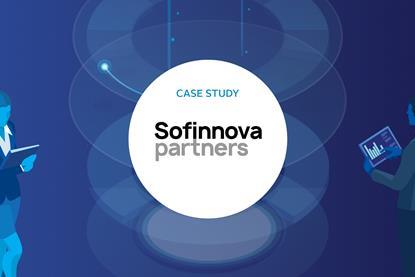
Sofinnova Partners: Our evolving ESG philosophy as an early-stage venture capital investor
2022-07-04T14:00:00+01:00
Sofinnova Partners on why and how it assesses the ESG maturity of its companies at each phase of their development.

Southern Asset Management: fixed income engagement in the Chinese context
2022-05-25T01:00:00+01:00
Case study by Southern Asset Management (SAM)
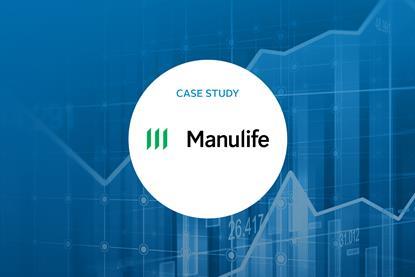
Manulife Investment Management: enhancing gender diversity in Chinese holdings
Case study by Manulife Investment Management

Harvest Fund Management: Exercising stewardship to drive transitions towards carbon neutrality
Case study by Harvest Fund Management
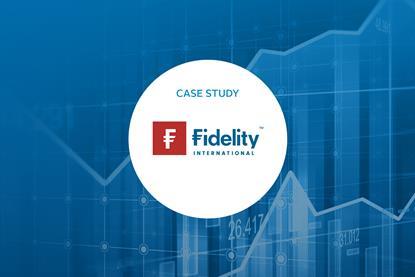
Fidelity International: Early-stage stewardship in the Chinese market
Case study by Fidelity International
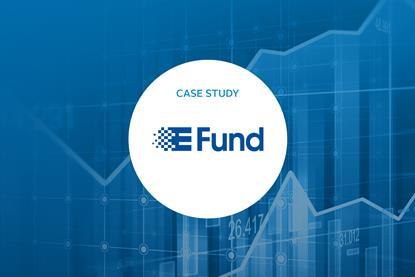
E Fund Management: improving corporate governance in China through engagement
Case study by E Fund

ChinaAMC: Improving ESG performance via engagement
Case study by ChinaAMC

BPEA: Driving solutions to plastic issues in the Chinese market
Case study by BPEA

BlackRock: addressing ESG risks in China’s energy sector
Case study by BlackRock

Wafra: Taking a holistic approach to ESG diligence in venture capital
2022-04-13T06:00:00+01:00
Wafra Inc. discusses its practical approach to ESG integration, which focuses on financially or operationally material issues.
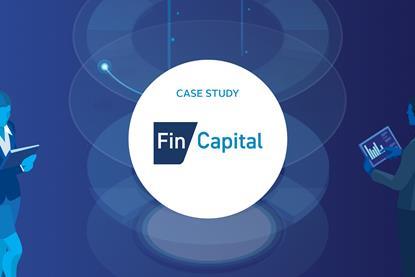
Fin Capital: ESG incorporation in venture capital investment
Fin Capital on why ESG metrics are as important as financial measurements and how it works with companies to close any identified gaps.
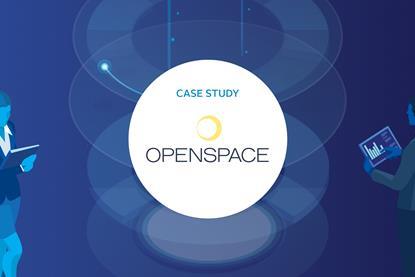
Openspace Ventures: ESG value creation work at start-ups
Openspace Ventures on how it works with companies to create long-term value creation strategies that can scale sustainable businesses.
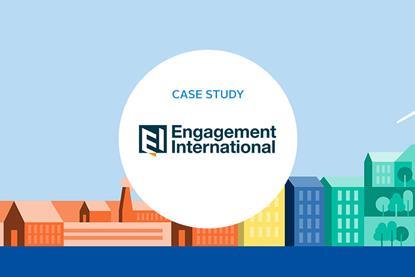
Engagement International: Addressing responsible tax
2021-10-20T07:56:00+01:00
Engagement International helps institutional investors act as active responsible owners through corporate engagement.

Corporate Governance 2020 Annual Study – performance of Latin American companies
2020-11-01T06:00:00+00:00
Case study by GovernArt and Vigeo Eiris Chile SpA

The importance of corporate governance in strategic asset allocation
2020-08-13T10:24:00+01:00
Case study by Aberdeen Standard Investments (ASI)
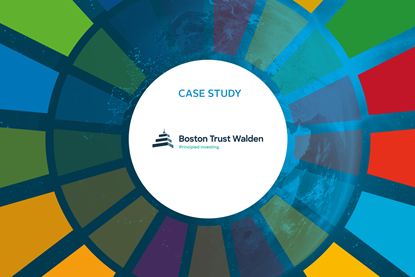
Engaging on corporate public policy lobbying
2019-09-30T15:01:00+01:00
As a long-term shareholder of publicly traded companies, Boston Trust Walden has worked to strengthen company policies, practices and transparency on key environmental, social and governance (ESG) issues through active ownership.

Case study: seeking clarity on third-party lobbying practices
2018-05-30T16:37:00+01:00
Case study by LGS

Case study: focusing on the climate lobbying practices of Swedish companies
2018-05-30T16:30:00+01:00
Case study by Öhman

Case study: understanding lobbying practices as part of carbon risk management
2018-05-30T16:26:00+01:00
Case study by GES International

Case study: Putting the spotlight on corporate climate lobbying
2018-05-30T16:18:00+01:00
Case study by AP7

Climate lobbying case study: ExxonMobil - perspective from Walden Asset Management
2018-05-30T15:07:00+01:00
Case study by Walden Asset Management

Engaging with companies on anti-corruption
2013-09-01T16:54:00+01:00
- News and press
- Annual Report
- PRI governance
- Privacy policy
- The PRI is an investor initiative in partnership with UNEP Finance Initiative and UN Global Compact .

- PRI Association, 25 Camperdown Street, London, E1 8DZ, UK
- Company no: 7207947
- +44 (0)20 3714 3141
- [email protected]
- PRI DISCLAIMER The information contained on this website is meant for the purposes of information only and is not intended to be investment, legal, tax or other advice, nor is it intended to be relied upon in making an investment or other decision. All content is provided with the understanding that the authors and publishers are not providing advice on legal, economic, investment or other professional issues and services. PRI Association is not responsible for the content of websites and information resources that may be referenced. The access provided to these sites or the provision of such information resources does not constitute an endorsement by PRI Association of the information contained therein. PRI Association is not responsible for any errors or omissions, for any decision made or action taken based on information on this website or for any loss or damage arising from or caused by such decision or action. All information is provided “as-is” with no guarantee of completeness, accuracy or timeliness, or of the results obtained from the use of this information, and without warranty of any kind, expressed or implied. Content authored by PRI Association For content authored by PRI Association, except where expressly stated otherwise, the opinions, recommendations, findings, interpretations and conclusions expressed are those of PRI Association alone, and do not necessarily represent the views of any contributors or any signatories to the Principles for Responsible Investment (individually or as a whole). It should not be inferred that any other organisation referenced endorses or agrees with any conclusions set out. The inclusion of company examples does not in any way constitute an endorsement of these organisations by PRI Association or the signatories to the Principles for Responsible Investment. While we have endeavoured to ensure that information has been obtained from reliable and up-to-date sources, the changing nature of statistics, laws, rules and regulations may result in delays, omissions or inaccuracies in information. Content authored by third parties The accuracy of any content provided by an external contributor remains the responsibility of such external contributor. The views expressed in any content provided by external contributors are those of the external contributor(s) alone, and are neither endorsed by, nor necessarily correspond with, the views of PRI Association or any signatories to the Principles for Responsible Investment other than the external contributor(s) named as authors.
Site powered by Webvision Cloud
University of Ottawa event calendar from May 6 to 12, 2024

A Church at War WHEN: Tuesday, May 7 from 12 p.m. to 1:15 p.m. WHERE: Online. The University of Ottawa Press and the Canadian Museum of History invite you to the virtual launch of A Church At War: MacKay Presbyterian Church, New Edinburgh, and the First World War in the company of Ottawa historian Alan Bowker and Canadian War Museum Chief Historian and Director of Research Tim Cook. (In English and French)
Audiology and Speech-Language Pathology 30th anniversary WHEN: Tuesday, May 7 from 4:30 p.m. to 7:30 p.m. WHERE: 200 Lees (LEE) ; in person. Faculty of Health Sciences dean Lucie Thibault invites you to celebrate the 30th anniversary of the Audiology and Speech-Language Pathology program. This event will feature Marie-Josée Taillefer and her daughter, Rosalie Taillefer-Simard, two well-known figures in Canada’s francophone cultural scene, who’ll speak about hearing and communication. (In French)
"Dress Codes: How the Laws of Fashion Made History" by Richard T. Ford WHEN: Wednesday, May 8 from 5 p.m. to 7 p.m. WHERE: Alex Trebek Alumni Hall ; in person. L aw professor and cultural critic Richard Thompson Ford presents an insightful and entertaining history of the laws of fashion from the middle-ages to the present day. Dress Codes explores the importance of day-to-day popular culture for political power, social hierarchy and individual autonomy. (In English)
MedShow 2024 presents musical production Super Med Bros WHEN: May 9 to 11, from 7 p.m. to 9 p.m. WHERE: Academic Hall ; in person. MedShow is an annual musical production by first- and second-year medical students of the Faculty of Medicine, with all proceeds going to charity. This year’s production is titled Super Med Bros, a tale of four medical students’ journey in a video game universe, portraying the realities and struggles shared by many medical students while sharing hope and rekindling what inspires them to pursue this career. (In English)
Overview and preliminary results of a Parenting Program to Promote Positive Discipline WHEN: Thursday, May 9 from 12 p.m. to 1 p.m. WHERE: Online. A discussion with Elisa Romano , Professor at the University of Ottawa's School of Psychology. Her presentation is entitled "Overview and preliminary results of a Parenting Program to Promote Positive Discipline." (In English)
Telfer Conference on Corporate Finance and Banking WHEN: Friday, May 10 from 8:30 a.m. to 4:15 p.m. WHERE: Desmarais Hall , Room DMS 12102; in person. This conference will have leading finance scholars from Canada, the US and the UK, presenting their high-impact research papers studying important issues in corporate finance and banking, such as corporate social responsibilities, mergers and acquisitions, corporate governance, traditional banks versus Fintech, among others. (In English)
uOttawa Annual Dizziness Symposium WHEN: Friday, May 10 from 7 a.m. to 5 p.m. WHERE: Centurion Conference & Event Center ; in person. Patients presenting with dizziness are challenging, whether this is acute or chronic, in the clinic or the emergency department. Dizzy patients are difficult to diagnose and manage for all clinicians, from primary care to specialists and other allied health professionals. This 1-day symposium will provide participants with a solid foundation of clinical knowledge and skills used to diagnose and treat patients with dizziness through a combination of didactic teaching, case-based learning, and clinical skills workshops. (In English) ACFAS Conference WHEN: May 13 to 17, 2024. WHERE: University of Ottawa . The University of Ottawa will host the 91st Annual ACFAS Conference, where more than 6,000 participants are expected for the biggest scientific conference of the Francophonie, in which over 300 sessions on various research disciplines will be presented.
More information: [email protected]
- Open access
- Published: 06 May 2024
Benchmarking the university campus food environment and exploring student perspectives about food insecurity and healthy eating: a case study from Australia
- Jemma Keat 1 ,
- Putu Novi Arfirsta Dharmayani 1 &
- Seema Mihrshahi 1
BMC Public Health volume 24 , Article number: 1245 ( 2024 ) Cite this article
2 Altmetric
Metrics details
To benchmark the university food environment and explore students’ experiences with food insecurity and healthy eating in order to inform interventions to improve access and affordability of healthy foods for university students.
A food environment audit was conducted on the university campus using the Uni-Food tool from April to May 2022 and was comprised of three main components, university systems and governance, campus facilities and environment, and food retail outlets. A qualitative study design was also used to conduct focus groups and semi-structured interviews with students to explore key themes regarding their experiences with food insecurity and healthy eating.
Macquarie University, Australia.
Participants
For the food environment audit 24 retail outlets on campus and for the qualitative component 29 domestic and international students enrolled at Macquarie University.
The university only scored 27% in total for all components in the food environment audit. The results showed the need for better governance and leadership of the food environment. The qualitative component suggested that the main barriers to accessing healthy foods were related to availability, pricing, and knowledge of healthy foods. Future intervention ideas included free fruits and vegetables, food relief, discounts, improved self-catering facilities, education, and increased healthy food outlets.
Conclusions
Improving governance measures related to healthy eating on campus are a core priority to strengthen the food environment and students identified pricing and availability as key issues. These findings will inform effective and feasible interventions to improve food security and healthy eating on campus.
Peer Review reports
Food environments are a collective of physical, socio-cultural, economic, political factors that influence the availability, accessibility, and consumption of foods and beverages [ 1 ]. Food environments can act as a facilitator or barrier to health, depending on the presence of ultra-processed, energy-dense foods and fresh food consumption [ 1 ]. The components of food environments include availability, accessibility, promotion and marketing, affordability, quality, convenience and governance[ 1 , 2 ]. Due to their influential nature, food environments can influence experiences with food, leading to food insecurity [ 1 ].
Food insecurity occurs when individuals or communities lack secure access to sufficient amounts of safe, nutritious food for an active, heathy life [ 1 ]. Additionally, the scarcity of safe foods can contribute to poorer mental and social wellbeing for these individuals[ 2 , 3 ]. Food insecurity can be influenced by a multitude of complex barriers and enablers, including an individual’s food environment. Poor food environments which can exacerbate food insecurity and unhealthy dietary behaviours include those that have limited access to healthy, affordable food outlets due to unavailability or location, and the increased presence and promotion of unhealthy, affordable fast-food outlets which incentivise poor dietary practices [ 4 ].
Young people are more at risk of food insecurity due to the additional constraints that they are faced with during this transitional period including, sociocultural influences, living out of home for the first time and targeted marketing [ 5 ]. Additionally, young people may be susceptible to consuming unhealthy foods or skipping meals due to low availability and accessibility of healthy, fresh, and culturally appropriate foods on university campuses [ 6 ]. University food environments are complex and highly influential in shaping students’ dietary behaviours and experiences with food security [ 6 ]. In Australia, the prevalence of food insecurity had been estimated to be up to 15% prior to the COVID-19 pandemic, and our research has estimated the prevalence of food insecurity among university students during the pandemic in 2020 to be 42%, and up to 75% in international students [ 7 ].
Universities often have a variety of food outlets on campus however, these may be inequitable for students due to heightened pricing and low fresh food availability [ 6 ]. Over the past decade, many universities in Australia have shifted away from internally managed university cafeterias to commercial models within their food environments [ 6 ]. As these models are predominately economically driven, this increases the risk of inequities experienced by students in regard to healthy, affordable food options on campus. As students spend most of their time on campus, it is essential to provide a supportive food environment that enables and promotes the consumption of sufficient safe and nutritious food to adopt a healthy lifestyle whilst considering their socio-economic status [ 6 ]. Therefore, there is a need to assess the food environment and students’ experiences with university food environment to address food insecurity among university students.
To date, a number of studies have focused on student’s perspectives on food choices on campus, but not specifically examined their experiences with food insecurity in relation to the University food environment[ 8 , 9 , 10 ]. Thus, this research aims to benchmark the food environment at an Australian university using a validated comprehensive tool [ 11 ] and assess students’ experiences with the university food environment including their experiences with food insecurity and healthy eating. The ultimate goal of the research is to inform interventions to reduce food insecurity on campus and improve access and affordability of healthy foods for university students.
This study was conducted at Macquarie University, located in Sydney, Australia. The university is a public institution which has more than 44,000 domestic and international students enrolled across 100 countries. There are four main faculties across the university including then disciplines of arts, business, medicine, health and human sciences, and science and engineering.
Food environment benchmarking
Design and sampling.
The university food environment was assessed utilising the Uni-Food tool developed by Deakin University [ 11 ]. This tool was selected as it encompassed a multi-faceted approach which includes various elements of the educational food environment, rather than focusing on a singular component as evident in other assessment tools [ 11 ]. Due to the complex nature of university food environments, it is crucial to conduct a comprehensive assessment of this setting to inform future interventions [ 11 ].
The Uni-Food tool focused on the measurement of three main components of the university food environment including, university policies and governance systems, food retail outlets and campus facilities and environment [ 11 ]. There are a total of 68 indicators within the tool, across these components [ 11 ]. Within each section of the tool, there are 16 domains and 42 sub-domains which provide a comprehensive analysis of the university environment [ 11 ]. The retail outlets component of the audit was conducted in May 2022 and involved on-campus observations and brief discussions with retail staff of 24 food outlets on campus.
Data collection
A comprehensive benchmarking of the university food environment was conducted in April to May 2022 by three assessors from Macquarie University using the Uni-Food tool [ 11 ]. Data was collected based on policy audit, campus audit, assessment of campus food environments using the Uni-Food Tool by three assessors after completing a training session. Figure 1 depicts the process for implementing the University Food Environment Assessment (Uni-Food) tool.

Uni Food Tool Data Collection Process
Students focus group/interviews
Design and recruitment.
Shortly after the Food Environment Benchmarking was completed, a qualitative study was conducted using focus groups and semi-structured interviews with students. The inclusion criteria to be participants were aged 18 years or older, enrolled as a student at Macquarie University, and identified as ‘food insecure’ using Six-Item Short Form Food Security Survey Module [ 12 ]. Demographic data was also collected as part of the pre-screening survey which identified age, enrolment status, student status (domestic or international), and race/ethnicity.
Recruitment of students to took place from August to September 2022. Participants were recruited using various methods, including university communications, social media advertisements, and student associations. Participants were asked to provide informed consent to participate in the study using a Digital Patient Information and Consent Form (PICF). The research team contacted them via their nominated student email as provided in the contact details section of this form.
Focus groups and interviews were conducted between 12th August 2022 and 9th September 2022 either online or in person. Focus group and interview sessions lasted between 45 and 60 min and were digitally recorded using Microsoft Teams. Each focus group session consisted of three to five participants. Domestic and international students were allocated to separate sessions to ensure that the conditions were supportive of their enrolment status and potential language barriers. Open ended questions were asked during these sessions to allow students to discuss their experiences and ideas in regard to food insecurity and healthy eating on campus (Supplementary Material S1 ).
Data analysis
Food environment analysis.
For all components of the Uni-Food tool, scores from all three assessors were then reviewed by the Uni-Food team at Deakin University who determined a final score, this was to improve the reliability of the results and reduce reporting biases. If any major discrepancies were identified amongst assessors, the reviewer then used the evidence supplied to make a final decision on the score.
Student focus group/interviews
Qualitative data from the focus groups and interviews was analysed using the NVivo 12 analytical software. A reflexive thematic analysis approach was undertaken as this method is effective in understanding experiences with increased flexibility in comparison to other methods which follow specific theoretical frameworks. The six steps of reflexive thematic analysis were utilised to analyse the datasets, including data familiarisation, coding, themes, and review of themes, and definitions [ 13 ].
The transcriptions were checked for accuracy against the audio recordings. The transcripts were then coded after they were initially reviewed to identify key themes and ideas from students in relation to various concepts discussed during the sessions. Codes were allocated to highlight students’ feelings and experiences with food insecurity and healthy eating on campus. These were then further refined through a secondary review of transcripts and coding.
Following this, the codes were reviewed and grouped together based on the broader concept of each code to create a wider theme as emerged throughout the sessions. After refinement of the themes, a further analysis of each theme was conducted to understand the deeper meaning and ideas shared by students. A total of 8 themes were included in the final analysis, with a total of 30 sub-themes as outlined in Supplemental Figure S2 .
According to the Uni-Food analysis, Macquarie University scored 27 out of 100 (27%) in total. Food retail outlets scored 45 out of 100 (45%), campus facilities and environment scored 41 out of 100 (41%), and university systems and governance only scored 4 out of 100 (4%). These results are concerning and highlight the significant gaps within each component of the university food environment, particularly within the university’s governance system as the lowest scoring component.
University systems and governance
This component scored 4 out of 100 (4%), which was the lowest scoring component overall and held a weighting of 40%. The university has implemented sufficient sustainability frameworks however, these did not have a focus on food, this is highlighted within leadership and planning (25%). Additionally, there were no university-wide policies that aimed to govern the procurement of healthy foods and beverages on campus. Stakeholder engagement was absent and there were no strong partnerships relative to healthy eating on campus. These results are shown in Fig. 2 .

University systems and governance results
Campus facilities and environment
This component scored 41 out of 100 (41%) and held a weighting of 40% as outlined in Fig. 3 . The highest scoring domains was availability and accessibility (97%), whereas the lowest scoring domains was equity (18%). Whilst this score highlights the needs for improvements, some key strengths were identified in this component, such as the availability of culturally diverse food on campus, free drinking water widely available across campus, the availability of self-catering facilities at some dedicated location on campus. Moreover, the university also has strong waste management practices in place, including separated bins and sorting processes to ensure recycling occurs, as well as adequate personal and community development initiatives, including a community garden for students and the community. There were also evident educational initiatives regarding sustainability and healthy diets however, these were driven by student groups with limited involvement from the university.

Campus facilities and environment results
Food retail outlets
This component was the strongest of all components within the audit and scored 45 out of 100 (45%), with a weighting of 20%, highlighted in Fig. 4 . The highest scoring domains was promotions (79%), whereas the lowest scoring was information (14%). Promotions were a key strength as 15 out of the 24 food outlets (62.5%) were free from any promotions of unhealthy foods and beverages. In majority of the food outlets on campus, prices equally encourage the purchase of unhealthy and unhealthy foods as well as vegetarian and meat-containing options. Whilst there is no strong incentive to opt for the purchase of healthy and vegetarian foods, there is no significant encouragement to purchase unhealthy options which can be considered a strength.
Approximately 10 of the 24 food outlets sold predominantly unhealthy foods or beverages, with the remaining 14 offering either majority healthy options or a combination of both healthy and unhealthy food options. Most food outlets lacked sufficient nutritional information and only 14 of the 24 outlets provided very limited information on dietary requirements and common allergens. A significant gap was highlighted within the waste management domain as whilst many outlets utilised recyclable or reusable packaging, no food outlets had established waste monitoring and strong reduction systems.

Food retail outlet results
Student focus groups and interviews
Demographic characteristics.
A total of 48 participants completed the online screening survey and provided informed consent. After following up with the participants who had initially registered to participate, a total of 29 students were included in the analysis, with 17 (58.6%) were postgraduate students, and 12 (41.4%) were undergraduate. There were 13 (44.8%) domestic students and 16 (55.2%) international students with age range between 18 and 36. Participants’ ethnicities included Asian (34.5%), Australian (17.2%), Indian (10.3%), Indigenous (10.3%), and others including Arabic, British, Scandinavian and Sri Lankan (22.7%).
Results from the qualitative component of the study were grouped into themes (1) Healthy food options on campus (2), Influences of food choices on campus (3), Changes in eating habits since starting at university (4), Impacts of COVID-19 on eating habits (5), Health impacts of food insecurity (6), Barriers to accessing healthy food (7), Views on current university support, and (8) Future intervention ideas. Representative quotes for each theme and sub-theme are shown in Table 1 .
Healthy food options on campus
Students mentioned that the most prominent opinions regarding healthy food on campus were those that contained either fruits or vegetables. Retailers predominately offering salads or sandwiches were perceived as an initial healthy option, as they contained vegetables and lower carbohydrate options. Food safety was also raised including unclean facilities, poor food preparation and presence of contaminants. When asked what they perceive to be healthy on campus (apart from mentioning food outlets), some students mentioned that nutritional composition and nutrient balances came to mind. Portion control and balanced composition of protein, carbohydrates and fibre were discussed. The consumption of unhealthy foods in moderation was raised as a concept of healthy eating at university in the absence of healthy food outlets.
Influences of food choices on campus
Students were asked to discuss what may influence their choices when purchasing food on campus. Key barriers to purchasing and consuming healthy foods were highlighted throughout the discussions; these were predominantly focused on price and nutritional quality. Social factors such as peer influences and culture were raised by students as an impact on their eating habits as they may be more likely to consume what their peers are eating, or foods deemed culturally safe. Students also discussed foods with nutrients that supported them with energy to focus on their studies. They discussed time and location as large influences on their choice of food whilst on campus, which demonstrates that convenience has a major role in food consumption. The most prevalent influence on student food choices was pricing as many options were too expensive for students in general. Additionally, taste preferences were highly influential in food choices and consumption for students as they wanted to eat foods with appealing taste.
Changes in eating habits since starting at university
To further understand how eating habits may be altered as a university student, students were asked to discuss any changes that have occurred since starting their studies. Any factors that have influenced their eating habits since becoming a student were also mentioned including time constraints and the availability of foods around campus. Due to the time commitments and class schedules many students were not able to spend as much time as they wanted cooking and preparing healthy meals. As a result, students were now more likely to purchase convenient foods deemed unhealthy such as processed fast foods. Energy requirements needed to sustain their studies since being at university were raised.
Impact of COVID-19 on eating habits
To gain an understanding of the impact of the COVID-19 pandemic on student eating habits and experiences with food insecurity, students were asked to share any changes that may have occurred during this time. Students discussed difficulties with accessing grocery stores during the lockdown period due to store closures and travel restrictions. They also reported issues with finding stock of healthy foods during the pandemic, leaving students to rely on unhealthy options that were available. Furthermore, the frequency of meals throughout the day may have been altered to ensure food lasted for longer. Pricing of foods during the COVID-19 pandemic was discussed by students as a large issue. As a coping mechanism, students mentioned that they were living on cheaper foods which had less nutritional value. Some students reported being more health conscious during the COVID-19 pandemic. In contrast to negative impacts of the pandemic, having time during lockdown periods allowed students to develop their capacity and gain skills with cooking and food preparation.
Health impacts of food insecurity
Students discussed health impacts arising from their experiences with food insecurity which comprised of physiological and psychological changes. The physiological health impacts of food insecurity were raised during the focus group and interview sessions, including weight loss and gain, loss of energy, nutrient deficiencies, headaches, and gastrointestinal issues. Students also discussed the mental impacts of food insecurity, including feelings of shame, embarrassment, guilt, and stress. This was also due to the increased prices of some healthy foods, resulting in frustration.
Barriers to accessing healthy foods
As students were previously asked to share the influences on their eating habits during COVID-19, and since commencing at university, an overview of the generic barriers was captured to inform future initiatives. Students mentioned that healthy options are often more expensive than unhealthy options which prevented them from eating better. Particularly, fresh fruits and vegetables as these were expensive to purchase and alternatively, students chose frozen options as they were more affordable. International students were impacted by pricing as they also had lower incomes due to restricted employment as well as those needing to provide for their family. Location of supermarkets and food outlets was a significant barrier as students would be less likely to purchase healthy foods if they had to travel a longer distance to access them. Limited options of healthy foods were also reported to influence students’ dietary behaviours. In terms of food literacy, insufficient food, and nutrition knowledge made them more susceptible to nutrition misinformation. Additionally, lack of food preparation and cooking skills were raised as a concern.
Views on current university support
Nutrition education within the university environment and curriculum was discussed by some students as they felt as though materials covered in tutorials or lectures provided knowledge and skills relative to healthy eating. Students discussed the food relief boxes that were available to students who were impacted by food insecurity. Although some students who experience food insecurity and accessed these boxes found them helpful, the contents were mostly canned and packaged goods which students perceived to be less healthy. Other students mentioned that they were not aware of the food relief boxes as they were not widely advertised, and the collection period was limited. Some students reported grocery vouchers provided by the university during the COVID-19 pandemic to help those who experienced food insecurity to purchase basic needs.
Future intervention ideas
Nutrition education emerged as a prominent theme for future initiatives as some students expressed the need to gain knowledge and awareness of healthy foods. Students suggested that statistics and detailed information on the benefits of healthy should be available online on the university’s website to encourage healthier food consumption. Additionally, students expressed that if the food outlets on campus displayed nutrition information including energy and macronutrient contents, it would allow students to know what they are consuming. Students felt free fruits available all year on campus would be beneficial, rather than having these available for shorter periods.
Students mentioned that the healthy options on campus were quite expensive, however if discounts were offered by the university, this would make purchasing these options more affordable and appealing. Reward schemes and food vouchers were also discussed where students would get a discount after purchasing from an outlet. Self-catering facilities, including food preparation amenities such as toasters and microwaves across campus were mentioned. Students felt as though having a communal area and equipment to support students with food preparation, would encourage them to bring healthy food from home whilst also allowing them to build capacity and skills regarding food preparation. Having a canteen on campus that offered ready-made healthy meals would also improve healthy eating.
Students discussed the governance of food available at the university through policy implementation. A policy on healthy eating was raised as a beneficial initiative to improve the health of students, this could also be focused on sugar regulations. Policies and monitoring relative to food safety to ensure food is safe and adheres to high standards was also raised. In addition to other interventions suggested by students, increasing healthy food outlets on campus, including a small grocery store would be helpful to purchase healthy snacks and fresh produce. Farmer’s markets on campus were discussed by students as these would encourage students to purchase fresh produce and encourage sustainability.
The current study aimed to comprehensively assess the university food environment and collect university students’ perspectives to inform interventions improving healthy eating and addressing food insecurity. The food environment benchmarking indicated the significant gaps within each component of the university food environment, particularly within the university’s governance system. Students reported a range of barriers to accessing healthy foods on campus.
Low scores in the food campus environment suggest that improvements are needed in the governance of the food environment through leadership, food retail policies and increased availability of affordable food options. There were no university-wide policies or frameworks identified that mentioned food or healthy eating, despite having a focus on sustainability. Previous literature highlighted that most university-wide governance documents within Australia and New Zealand predominantly focus on waste management which is consistent with findings from the food environment audit at Macquarie University [ 14 ]. Stakeholders within the university also had little to no involvement in improving the healthiness of the food environment on campus.
To improve the equity of the food environment, pricing requirements could be introduced for food retailers to ensure that a range of healthy and environmentally sustainable food options are affordably price and incentivised for consumption. Another measure to improve equity would be to implement policies that require all food retailers to display easily interpretable nutrition and sustainability labelling for all products, which would also improve capacity and education about these foods [ 15 ]. Despite the identified gaps within university governance, the university should consider building on existing efforts within community and personal development through further education and self-catering facilities to improve food preparation capacity as the results suggest that this could empower and enable students to access and consume healthier foods.
Perceptions of young people are often underrepresented and are not included in consultations for change despite them being interested in involvement, therefore, limiting the efficacy of future interventions [ 16 ]. Studies have revealed that engagement with young people is essential for transformation and meaningful change due to their influence and insight into contemporary issues[ 16 , 17 ]. Many studies have previously assessed this topic with a singular approach, including an audit without student consultation or qualitative consultations without a comprehensive assessment of the environment [ 18 , 19 , 20 , 21 , 22 ]. The current study utilised a combined approach to holistically assess the university food environment. The assessment of multiple components of the food environment allows for a comprehensive review to determine key facilitators and barriers, including individual and physical factors [ 23 ].
During the qualitative component of the study, students discussed the wider influences of their food choices whilst on campus, including socio-cultural factors such as peer influence, nutritional quality of foods, time and location, price, and taste. These findings were consistent with previous research that found university students to consume unhealthier foods knowingly due to the convenience, lower price point and peer influence [ 24 ]. Additionally, students reported that taste preferences had a large impact on their food choices whilst on campus as they were less likely to consume healthier foods which were less appealing. Individual influences including personal beliefs and preferences, self-discipline in conjunction with external influences from their peers and environment are known to have a significant effect on a student’s dietary behaviours, which align to the discussions from this qualitative component of the study[ 25 , 26 , 27 ].
Since starting at university, many participants, particularly international students, discussed major changes to their eating habits, including the shift from preparing meals at home to purchasing more processed meals. These findings are consistent with prior studies as many students have shifted towards a westernised, processed diet since commencing at university, particularly displaced students who have experienced disruptions to their studies due to a crisis or major change in their lives[ 28 , 29 ].
Students also discussed the decreased frequency of meals due to class schedules and study commitments throughout the day, which aligned with prior literature suggesting that dietary intake of first year university students had rapidly declined in comparison to before commencing their studies [ 30 ]. Despite this, many students felt they had still met their nutrient requirements as some often ate larger meals or binged on foods, at single points throughout the day which is commonly seen in students [ 30 ]. Students also reported that they needed to consume foods that would provide them with energy to sustain their studies as it would assist them in achieving better academic outcomes. Healthier diets, including adequate fruits and vegetables intake were identified to be correlated with improved focus, memory, mood and academic outputs[ 31 , 32 , 33 ].
When asked to discuss their experiences with healthy eating and food security throughout the COVID-19 pandemic, participants mentioned that access to food and pricing were the main barriers. Government lockdowns impacted the ability to access supermarkets and participants were restricted to their local areas which may not have had healthy options readily available due to supply issues[ 34 , 35 ]. During these times, many participants mentioned that they consumed less foods or consumed unhealthier options due to pricing to balance their finances in the absence of a stable income [ 35 ].
Apart from discussing negative impacts, participants also discussed the positive changes in their dietary patterns and capacity due to increased time to build and develop food preparation skills. Due to restaurant closures, many students opted to spend time cooking their own healthy meals which they did not report doing prior to the pandemic. These results are similar to a study conducted in Brazil, revealing that 70% of participants had increased their cooking skills during the pandemic, using mostly fresh ingredients [ 36 ]. These findings were also consistent within an Australian context as home cooking and experimentation occurred during the pandemic, leading to improved food literacy [ 37 ].
The most common themes related to health impacts were physiological and metabolic changes, including weight gain and loss, headaches, increased stress and body image concerns. Whilst many studies have focused on the psychological impacts of being food insecure, including depression and anxiety, these often lead to physical outcomes which can have a detrimental impact on a young person’s health[ 38 , 39 , 40 ]. Students who consume an insufficient quantity of nutritionally adequate foods, may experience malnutrition, nutrient deficiencies, and energy loss [ 40 , 41 ]. Students who consume processed, fast foods as a coping mechanism may be at risk of obesity and other chronic diseases, including type 2 diabetes and cardiovascular disease[ 38 , 39 ].
The key initiatives discussed to improve food security and healthy eating were university nutrition education, food relief boxes and vouchers, free fruits on campus, increased healthy food outlets, discount and reward schemes, food preparation facilities, and improved food governance. Food relief boxes were beneficial as they assisted students with immediate relief to ensure that they did not experience hunger, however, they felt as though the contents were not supportive of healthy lifestyles due to the absence of healthy, fresh foods, these discussions were consistent with prior findings[ 42 , 43 , 44 ].
In contrast to this, students discussed discount schemes and food vouchers for supermarkets to be beneficial in promoting healthy eating as they were able to purchase fresh produce whilst encouraging food preparation skills. Self-catering facilities on campus including microwaves, toasters, and communal spaces would also promote healthy cooking [ 45 ]. Free fruits and outlets offering fruits and vegetables on campus were identified as an ideal option to encourage healthy snacking, especially during university events where unhealthy food would otherwise be promoted[ 41 , 42 , 46 ].
Additionally, participants also raised that governance of the food environment may be required to ensure food safety standards are withheld alongside regulations of unhealthy foods. Studies have revealed that universities in other countries have implemented legislation regarding unhealthy food and beverage taxations, marketing restrictions, subsidies on healthy options, these can assist in preventing non-communicable diseases [ 47 , 48 ].
Strengths & limitations
This study had various strengths which allowed for an accurate investigation and representation of students’ experiences with healthy eating and food insecurity. Using food environment analysis was a strength as data was collected by three assessors individually which was then cross-referenced and validated by an external, independent experienced team of researchers from another university for validation and to decrease reporting biases. Both the focus groups and semi-structured interviews were exploratory and allowed students to discuss their experiences in detail with limited guidance. Whilst the general topics were guided by the facilitator, there was flexibility in the discussion and this approach allowed students to share their views, attitudes, and ideas without any restrictions. By dividing students into two groups based on their student status, it prevented any contentious discussions due to different experiences and vulnerability of these populations throughout the pandemic due to differences in government support.
This study had some limitations within both components. The Uni-Food tool does not consider the proximity of the university to shopping centres, the presence of a nutrition and dietetics department, and food outlets that serve alcohol on campus. These factors may influence the score and affect the healthiness of the university food environment. The use of purposive sample to recruit students identified as food insecure for focus groups and semi-structured interviews was another study limitation, which may not reflect other students’ experience who are deemed to be food secure. Moreover, changes in eating habits during the pandemic and since commencing university were self-reported narratives which may present reporting and recall biases.
This study highlights the need to comprehensively measure the food environment and consult students to identify the key barriers and enablers of healthy eating and food insecurity. Availability, pricing, location, taste preferences, knowledge, convenience, and nutritional quality of foods were influential factors to improve healthy eating on campus. The benefits of short-term assistance in accessing foods provided by the university were deemed to be limited. The direction of future interventions on campus could build on the existing efforts to ensure that relief options are sustainable and supportive of students’ healthy lifestyles through discounts, food preparation facilities. policies, and education. Additionally, the university should conduct further consultations with a wider sample of university students and stakeholders to determine the feasibility of these potential interventions to ensure that they will be effective in improving healthy eating and reducing food insecurity for students on campus.
Data availability
The data presented in this study are not publicly available but are available from the corresponding author on reasonable request.
Abbreviations
Coronavirus Disease 2019
Patient Information and Consent Form
Vandevijvere S, Swinburn B. and International Network for Food and Obesity/non-communicable diseases (NCDs) Research, Monitoring and Action Support (INFORMAS, 2014. Towards global benchmarking of food environments and policies to reduce obesity and diet-related non-communicable diseases: design and methods for nation-wide surveys. BMJ open, 4(5), pe005339.
Lytle LA. Measuring the food environment: state of the science. Am J Prev Med. 2009;36(4):S134–44.
Article PubMed PubMed Central Google Scholar
Ebadi-Vanestanagh M, Azizi-Lalabadi M, Jahangiry L, Alizadeh M. Challenges of food insecurity indicators, diet quality and weight outcomes in women: a cross-sectional study. Prev Nutr Food Sci. 2019;24(4):393.
Tyrrell RL, Greenhalgh F, Hodgson S, Wills WJ, Mathers JC, Adamson AJ, et al. Food environments of young people: linking individual behaviour to environmental context. J Public Health. 2017;39(1):95–104.
Google Scholar
Fang D, Thomsen MR, Nayga RM. The association between food insecurity and mental health during the COVID-19 pandemic. BMC Public Health. 2021;21(1):1–8.
Article Google Scholar
Murray S, Peterson C, Primo C, Elliott C, Otlowski M, Auckland S, Kent K. Prevalence of food insecurity and satisfaction with on-campus food choices among Australian university students. Int J Sustain High Educ. 2021 Mar 8.
Mihrshahi S, Dharmayani PN, Amin J, Bhatti A, Chau JY, Ronto R, Turnip D, Taylor M. Higher prevalence of food insecurity and psychological distress among international university students during the COVID-19 pandemic: an Australian perspective. Int J Environ Res Public Health. 2022;19(21):14101.
Ali HI, Jarrar AH, Abo-El-Enen M, Al Shamsi M, Al Ashqar H. Students’ perspectives on promoting healthful food choices from campus vending machines: a qualitative interview study. BMC Public Health. 2015;15(1):1–8.
Article CAS Google Scholar
Tam R, Yassa B, Parker H, O’Connor H, Allman-Farinelli M. University students’ on-campus food purchasing behaviors, preferences, and opinions on food availability. Nutrition. 2017;37:7–13.
Article PubMed Google Scholar
Dhillon J, Diaz Rios LK, Aldaz KJ, De La Cruz N, Vu E, Asad Asghar S, Kuse Q, Ortiz RM. We don’t have a lot of healthy options: Food environment perceptions of first-year, minority college students attending a food desert campus. Nutrients. 2019;11(4):816.
Mann D, Kwon J, Naughton S, Boylan S, Chan J, Charlton K, Dancey J, Dent C, Grech A, Hobbs V, Lamond S. Development of the University Food Environment Assessment (Uni-Food) Tool and process to benchmark the healthiness, equity, and environmental sustainability of university food environments. Int J Environ Res Public Health. 2021;18(22):11895.
United States Department of Agriculture. Survey Tools. 2014. http://www.ers.usda.gov/topics/food-nutrition-assistance/food-security-in-the-us/survey-tools.aspx .
Braun V, Clarke V. Reflecting on reflexive thematic analysis. Qualitative Res Sport Exerc Health. 2019;11(4):589–97.
Grech A, Howse E, Boylan S. A scoping review of policies promoting and supporting sustainable food systems in the university setting. Nutr J. 2020;19(1):1–3.
Coyle DH, Sanavio L, Barrett E, Huang L, Law KK, Nanayakkara P, Hodgson JM, O’Connell M, Meggitt B, Tsai C, Pettigrew S. A cross-sectional evaluation of the Food Environment at an Australian University campus. Nutrients. 2023;15(7):1623.
Thayer EK. Youth Perceptions of Food Environment in the High Point Neighborhood in Seattle, WA. University of Washington; 2020.
Bulc B, Al-Wahdani B, Bustreo F, Choonara S, Demaio A, Jácome DI, Lal A, Odede JP, Orlic P, Ramchandani R, Walji S. Urgency for transformation: youth engagement in global health. Lancet Global Health. 2019;7(7):e839–40.
Lee KM, Marcinow ML, Minaker LM, Kirkpatrick SI. The healthfulness of eateries at the University of Waterloo: a comparison across 2 time points. Can J Diet Pract Res. 2019;81(2):72–9.
Lo BK, Minaker L, Chan AN, Hrgetic J, Mah CL. Adaptation and validation of a nutrition environment measures survey for university grab-and-go establishments. Can J Diet Pract Res. 2016;77(1):17–24.
Tseng M, DeGreef K, Fishler M, Gipson R, Koyano K, Neill DB. Peer reviewed: Assessment of a university campus food environment, California, 2015. Preventing chronic disease. 2016;13.
Whatnall MC, Patterson AJ, Hutchesson MJ. Effectiveness of nutrition interventions in vending machines to encourage the purchase and consumption of healthier food and drinks in the university setting: a systematic review. Nutrients. 2020;12(3):876.
Grech A, Hebden L, Roy R, Allman-Farinelli M. Are products sold in university vending machines nutritionally poor? A food environment audit. Nutr Dietetics. 2017;74(2):185–90.
Rose D, Bodor JN, Hutchinson PL, Swalm CM. The importance of a multi-dimensional approach for studying the links between food access and consumption. J Nutr. 2010;140(6):1170–4.
Liu KSN, Chen JY, Sun K-S, Tsang JPY, Ip P, Lam CLK. Adolescent knowledge, attitudes and practices of healthy eating: findings of Qualitative Interviews among Hong Kong Families. Nutrients. 2022;14(14):2857.
Lambert M, Chivers P, Farringdon F. Their own words: a qualitative study exploring influences on the food choices of university students. Health Promotion J Australia. 2019;30(1):66–75.
Mawer T, Kent K, Williams AD, McGowan CJ, Murray S, Bird ML, et al. The knowledge, barriers and opportunities to improve nutrition and physical activity amongst young people attending an Australian youth mental health service: a mixed-methods study. BMC Health Serv Res. 2022;22(1):1–789.
Al-Khamees NA. Food habits of university nutrition students: pilot study. Nutr food Sci. 2009;39(5):499–502.
Shi Y, Hayba N, Allman-Farinelli M. International tertiary education students experienced difficulties in dietary transitions in Australia: a qualitative study. Health Promotion J Australia. 2023 Apr 7.
Bárbara R, Ferreira-Pêgo C. Changes in eating habits among Displaced and Non-displaced University students. Int J Environ Res Public Health. 2020;17(15):5369.
Burrows TL, Whatnall MC, Patterson AJ, Hutchesson MJ. Associations between Dietary Intake and Academic Achievement in College students: a systematic review. Healthc (Basel). 2017;5(4):60.
Edwards JSA, Meiselman HL. Changes in dietary habits during the first year at university. Nutr Bull. 2003;28(1):21–34.
Reuter PR, Forster BL, Brister SR. The influence of eating habits on the academic performance of university students. J Am Coll Health. 2021;69(8):921–7.
Vik FN, Nilsen T, Øverby NC. Aspects of nutritional deficits and cognitive outcomes–triangulation across time and subject domains among students and teachers in TIMSS. Int J Educational Dev. 2022;89:102553.
Louie S, Shi Y, Allman-Farinelli M. The effects of the COVID‐19 pandemic on food security in Australia: a scoping review. Nutr Dietetics. 2022;79(1):28–47.
Zorbas C, Browne J, Chung A, Peeters A, Booth S, Pollard C et al. Shifting the social determinants of food insecurity during the COVID-19 pandemic: the Australian experience. Food Secur. 2022;1–20.
Dezanetti T, Quinaud RT, Caraher M, Jomori MM. Meal preparation and consumption before and during the COVID-19 pandemic: the relationship with cooking skills of Brazilian university students. Appetite. 2022;175:106036–106036.
Ronto R, Nanayakkara J, Worsley A, Rathi N. COVID-19 & culinary behaviours of Australian household food gatekeepers: a qualitative study. Appetite. 2021;167:105598.
Davison KM, Gondara L, Kaplan BJ. Food insecurity, poor diet quality, and suboptimal intakes of folate and iron are independently associated with perceived mental health in Canadian adults. Nutrients. 2017;9(3):274.
Franklin B, Jones A, Love D, Puckett S, Macklin J, White-Means S. Exploring mediators of food insecurity and obesity: a review of recent literature. J Community Health. 2012;37(1):253–64.
Masler IV, Palakshappa D, Skinner AC, Skelton JA, Brown CL. Food insecurity is associated with increased weight loss attempts in children and adolescents. Pediatr Obes. 2021;16(1):e12691.
Willows ND, Au V. Nutritional quality and price of university food bank hampers. Can J Diet Pract Res. 2006;67(2):104–7.
de Vlieger N, van Rossum J, Riley N, Miller A, Collins C, Bucher T. Nutrition education in the Australian New South Wales primary school curriculum: knowledge and attitudes of students and parents. Children. 2020;7(4):24.
Oldroyd L, Eskandari F, Pratt C, Lake AA. The nutritional quality of food parcels provided by food banks and the effectiveness of food banks at reducing food insecurity in developed countries: a mixed-method systematic review. J Hum Nutr Dietetics. 2022 Feb 3.
Shi Y, Lukomskyj N, Allman-Farinelli M. Food access, dietary acculturation, and food insecurity among international tertiary education students: a scoping review. Nutrition. 2021;85:111100.
Wongprawmas R, Sogari G, Menozzi D, Mora C. Strategies to promote healthy eating among university students: a qualitative study using the nominal group technique. Front Nutr 2022 Feb 2:59.
van den Bogerd N, Peppelenbos H, Leufkens R, Seidell JC, Maas J, Dijkstra SC. A free-produce stand on campus: impact on fruit and vegetable intake in Dutch university students. Public Health Nutr. 2020;23(5):924–34.
Pineda E, Poelman MP, Aaspõllu A, Bica M, Bouzas C, Carrano E, De Miguel-Etayo P, Djojosoeparto S, Blenkuš MG, Graca P, Geffert K. Policy implementation and priorities to create healthy food environments using the healthy food Environment Policy Index (Food-EPI): a pooled level analysis across eleven European countries. Lancet Reg Health-Europe. 2022;23:100522.
Rickrode-Fernandez Z, Kao J, Lesser MN, Guess K. Implementation of a healthy Food and Beverage Policy at a Public University. J Nutr Educ Behav. 2021;53(10):891–9.
Download references
Acknowledgements
The authors acknowledge Dr Davina Mann, Dr Sarah Dickie and Prof Gary Sacks of the Global Centre for Preventive Health and Nutrition, Deakin University who analysed data collected using the Uni-Food Tool and Carla Lopes for assisting with the data collection.
Author information
Authors and affiliations.
Department of Health Sciences, Faculty of Medicine, Health and Human Sciences, Macquarie University, Level 3, 75 Talavera Road, North Ryde, Sydney, NSW, 2109, Australia
Jemma Keat, Putu Novi Arfirsta Dharmayani & Seema Mihrshahi
You can also search for this author in PubMed Google Scholar
Contributions
SM conceptualised the study and together with JK developed the methodology. JK with the assistance of PNAD collected the data. JK analysed the qualitative component and wrote the original draft. All authors contributed to review and editing of the draft.
Corresponding author
Correspondence to Jemma Keat .
Ethics declarations
Ethics approval and consent to participate.
This study was granted approval from the Deakin University Ethics Committee (HEAG-H 180_2020) for the Food Environment Benchmarking and Macquarie University Human Research Ethics Committee (Reference Number: 520221186039979; Project ID: 11860) for students focus group/interviews. Informed consent was obtained from all individual participants included in the study.
Consent for publication
Not Applicable.
Competing interests
The authors declare no competing interests.
Additional information
Publisher’s note.
Springer Nature remains neutral with regard to jurisdictional claims in published maps and institutional affiliations.
Electronic supplementary material
Below is the link to the electronic supplementary material.
Supplementary Material 1
Rights and permissions.
Open Access This article is licensed under a Creative Commons Attribution 4.0 International License, which permits use, sharing, adaptation, distribution and reproduction in any medium or format, as long as you give appropriate credit to the original author(s) and the source, provide a link to the Creative Commons licence, and indicate if changes were made. The images or other third party material in this article are included in the article’s Creative Commons licence, unless indicated otherwise in a credit line to the material. If material is not included in the article’s Creative Commons licence and your intended use is not permitted by statutory regulation or exceeds the permitted use, you will need to obtain permission directly from the copyright holder. To view a copy of this licence, visit http://creativecommons.org/licenses/by/4.0/ . The Creative Commons Public Domain Dedication waiver ( http://creativecommons.org/publicdomain/zero/1.0/ ) applies to the data made available in this article, unless otherwise stated in a credit line to the data.
Reprints and permissions
About this article
Cite this article.
Keat, J., Dharmayani, P.N.A. & Mihrshahi, S. Benchmarking the university campus food environment and exploring student perspectives about food insecurity and healthy eating: a case study from Australia. BMC Public Health 24 , 1245 (2024). https://doi.org/10.1186/s12889-024-18664-x
Download citation
Received : 14 January 2024
Accepted : 18 April 2024
Published : 06 May 2024
DOI : https://doi.org/10.1186/s12889-024-18664-x
Share this article
Anyone you share the following link with will be able to read this content:
Sorry, a shareable link is not currently available for this article.
Provided by the Springer Nature SharedIt content-sharing initiative
BMC Public Health
ISSN: 1471-2458
- Submission enquiries: [email protected]
- General enquiries: [email protected]

IMAGES
VIDEO
COMMENTS
It is generally good corporate governance practice that if a company discovers a Reg FD violation, to minimize risks, it should promptly disclose the information by a Reg FD-compliant method. For example, if an executive officer selectively discloses material nonpublic information, the company can correct the situation by filing a Form 8-K to ...
This case study examines corporate governance issues at Wells Fargo and Company. The bank was embroiled in controversies due to its cross-selling tactics and the enormous pressure the management exerted on the employees to ensure its success.
in editing the case studies and the students of the NUS Business School for their work in researching and producing the cases. We hope this 7th volume of case studies will continue to encourage robust discussions on governance and contribute to advancing corporate governance standards in Singapore, the region and beyond. Yeoh Oon Jin FCPA (Aust.)
Associate Professor Aiyesha Dey discusses how the case, "Scott Tucker: Race to the Top," examines the role of individual leaders in the corporate governance system, as well as their responsibility for creating a positive corporate culture that embodies ethics, self-restraint, and a commitment to serve. Open for comment; 0 Comments.
James Baron, David Larcker, Brian Tayan. 2011. This case is a follow up to HR-29A, and explains the actions taken by Keller Williams in response to the residential real estate market downturn in 2008 and 2009. The case explains the programs and initiatives put in place by the company to boost agent….
Volkswagen Case Study George Dallas June 2020 Volkswagen's Dieselgate: corporate governance and sustainability Of the many companies representing German industry, Volkswagen AG (VW) has long been one of the most recognised, and iconic, brands of "Deutschland AG". As an automotive
The suit offers five main lessons for companies and board members: 1) Hire board members for competence and objectivity; 2) Ensure that the board structure aligns with industry needs; 3) Prepare ...
This case study examines corporate governance issues at Wells Fargo and Company. The bank was embroiled in controversies due to its cross-selling tactics and the enormous pressure the manage-ment exerted on the employees to ensure its success. Investigations by media, followed by statutory agencies, revealed the creation of fake accounts ...
New research on governance from Harvard Business School faculty on issues including governance policy, Boards and other governing institutions and the influence of shareholders and government regulators. ... A study of 30 years of corporate advocacy by Jonas Meckling finds that energy companies have backed clean-energy efforts when it aligns ...
About this book. This book provides insights into current issues in corporate governance by examining twelve cases from the 2010s and 2020s where corporate governance was seen to be an issue. The cases are designed to introduce the reader to 'real life' episodes with corporate governance implications, shedding light on why corporate ...
discusses regulatory and governance issues relating to the Jardine companies which have secondary listings in Singapore, but those issues were triggered by ... Now into its 4th volume, the Corporate Governance Case Studies series has been an important resource for boards and management in Singapore, Asia-Pacific and beyond. We thank Prof Mak for
Introduction: Corporate governance and ethics are two i nterrelated concepts that refer to the way. in which a company is managed an d the principles that guide its decision-making. processes ...
Finally, while the United States is the predominant focus of corporate governance research, different regions and countries possess a multitude of unique contexts that offer tremendous opportunities for future research on corporate governance. The study of Yan et al. (2019) examining SRI funds across 19 countries shows how country-level ...
Preface. This Enron case study presents our own analysis of the spectacular rise and fall of Enron. A summary was first published on our website in 2015, opening a series of case studies assessing organisations against ACG's Golden Rules of corporate governance and applying our proprietary rating tool.
This latest volume, Volume 11, will be the final volume in this series. In all, the 11 volumes contain 237 cases - 84 Singapore, 54 Asia-Pacific (ex-Singapore), and 99 from the rest of the world. In 2020, I also co-edited a special financial services edition with my colleague, Richard Tan, also published by CPA Australia.
With 189 member countries, staff from more than 170 countries, and offices in over 130 locations, the World Bank Group is a unique global partnership: five institutions working for sustainable solutions that reduce poverty and build shared prosperity in developing countries.
Trend 1: Responding to macroeconomic uncertainty. We face an unusual and uncertain economic situation—the potential for a recession with an odd confluence of factors—rising inflation, higher interest rates, low unemployment, and, for the moment, growth and high consumer spending. I see this uncertainty intensifying in 2023.
This paper pretends to do a theoretical approach of Corporate Governance, having as support some case studies about companies like Coca-Cola, Nokia, Microsoft, and Amazon.com. The methodology for ...
This Enron case study presents our own analysis of the spectacular rise and fall of Enron. It is the first in a new series assessing organisations against ACG's Golden Rules of corporate governance and applying our proprietary rating tool.. As we say in our business ethics examples homepage introducing this series, the first and most critical rule is an ethical approach, and this should ...
improve governance and support the government's vision of positioning Singapore as a global financial centre. This inaugural collection of teaching case studies aims to raise awareness and promote thoughtful discussions on key corporate governance issues in companies across several markets, particularly in Asia. The
Engaging with companies on anti-corruption. 1 September 2013. Case study. The PRI works with its signatories to identify key environmental, social and governance (ESG) issues in the market. It produces guidance materials, organises events and facilitates initiatives to address them.
This conference will have leading finance scholars from Canada, the US and the UK, presenting their high-impact research papers studying important issues in corporate finance and banking, such as corporate social responsibilities, mergers and acquisitions, corporate governance, traditional banks versus Fintech, among others. (In English)
Improving governance measures related to healthy eating on campus are a core priority to strengthen the food environment and students identified pricing and availability as key issues. These findings will inform effective and feasible interventions to improve food security and healthy eating on campus. ... a case study from Australia. BMC ...